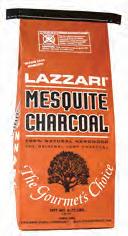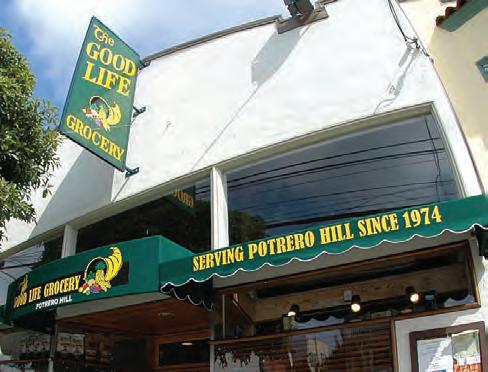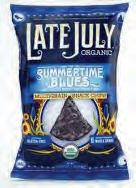




Kindergarten- through fifthgrade Daniel Webster Elementary School may soon expand to include sixth- through eighth-grade classes. Under a proposal Webster parents made to the San Francisco Unified School District (SFUSD) last fall, the school’s Missouri Street campus would house kindergarteners through second graders.
The Enola Maxwell campus on De Haro Street which currently hosts sixth- through 12-grade students at International Studies Academy (ISA) following a 2008 merger between Excelsior Middle School and International Studies Academy High School would be designated for third through eighth graders. ISA’s ninth through 12-grade students would transition to another, unspecified, high school.
The proposal, which is being energetically supported by a group of parents who launched an effort to reinvigorate Webster seven years ago, is bringing a number of tensions to surface, including the divide between Potrero Hill’s northern and southern slopes, SFUSD’s

assignment of Southside youth to poorly funded schools, and the lack of communication between SFUSD and community members.
Since December, the Daniel Webster Middle School Task Force (MSTF), a group of Webster parents advocating for the proposal, has held monthly meetings with SFUSD

Proposition A is one of only two local initiatives that will appear on this year’s June 5th primary election ballot. The proposition would repeal the Refuse Collection and Disposal Ordinance of 1932, which requires garbage collection agencies to hold permits, and replace it with a competitive bidding procedure for each of five different refuse collection contracts. The proposition would also require the City to own the garbage processing and transfer facilities, which would have to be located in San Francisco. Currently one company, Recology, handles all of the City’s trash, recycling and composting under a non-bid contract.
Proposition A’s primary advocates include former state senator and retired judge Quentin Kopp and Tony Kelly, who received the second greatest number of first place votes in the 2010 race for District 10 Board of Supervisors, and has served as the Potrero
By Katrina Schwartz By Keith BurbankThe San Francisco Planning Commission voted six to one in favor of a use change that will allow Timberly Hughes to open a child care center in her 20th and Connecticut streets building. City planner Diego Sanchez told the commission that the department believed 501 Connecticut Street is suitable for a child care center, and recommended that the requested use change be approved.
According to Commissioner Gwyneth Borden, how the property is used should be up to its owner. “I would have a hard time denying the project,” Borden said. Borden said she was sympathetic to Hughes because many of her friends with young children are having trouble finding care for them.
But Commissioner Ron Miguel, who cast the sole vote against approving the change, said he toured

Boosters Association’s president for most of the past decade. Kelly’s interest in garbage was sparked during the supervisorial race, when residents of Little Hollywood, which is located near Recology’s transfer station on Tunnel Road, complained about the smell and health risks associated with living near the dump. Kelly believes that San Francisco’s treatment of waste disposal is emblematic of the need for Southside neighborhoods to fight for the same quality of life as the rest of San Francisco.
“This measure isn’t even about Recology. It’s about how City Hall does business,” Kelly insisted. He’s concerned about the fact that Recology has a monopoly on all aspects of the waste disposal business in San Francisco, from picking-up residential and commercial waste, to processing it at its transfer station, to transporting it to the landfill. The only part of the process that Recology doesn’t run

Hughes’ facility, and “would not put [his] children inside that very, very, very limited spot.” The proposed child care center’s outside play area which is enclosed by a new fence and the building itself will
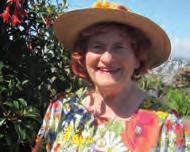
Last Spring Chicago Mayor Rahm Emanuel announced plans to invest $7 billion to improve that city’s public transit system, schools, and parks. Notably, none of these investments will be paid for through property or sales tax increases. Instead, financing will be secured by a nonprofit corporation, Chicago Infrastructure Trust, from profit-sharing or interestearning investors, including public pension funds. In addition, projects will be funded through government cost-cutting, better management of municipal energy and water use, and user fees. Chicago’s plan includes such mouth-watering items as $300 million to buy 180 acres of parkland, and build playgrounds, basketball courts, sports fields, nature trails, bike and running paths. The expenditures and resulting economic activity could generate upwards of 30,000 jobs. According to Emanuel, nothing less than an “integrated, comprehensive approach” is needed for “building a new Chicago.”
In the wake of redevelopment’s death, this is exactly the approach San Francisco should take to create the infrastructure necessary to support a thriving, environmentally-sustainable, and economically productive Southside. A new city is being built within San Francisco, stretching from South-of-Market to Visitacion Valley. But state-of-the-art office buildings, medical complexes and housing are being constructed on top of the bones of an Industrial Age civilization.
The existing road system was laidout to cater to manufacturing plants and shipyards; the Central Waterfront was a workhorse, rather than an ecological and recreational asset; schools and parks were an afterthought. Yet it’s in Bayview, Dogpatch, Mission Bay, Potrero Hill, Showplace Square, and other Southside neighborhoods where San Francisco’s future will be written. “You can’t have a 21st century economy on a 20th century foundation without holding yourself back,” said Emanuel, a statement that’s even more apt when applied to a slice of the City that’s quickly emerging as a bio- and
high-technology hub.
Some infrastructure investment is already occurring, including as a residual from redevelopment activity in Hunters Point and Mission Bay, and as a result of San Francisco Public Utilities Commission water bond monies. More bond money including for parks is likely on its way. But Southside San Francisco merits more than a patchwork, narrowly property tax-financed, approach to developing public amenities, and current fiscal conditions demand it. To paraphrase Emanuel, an integrated, comprehensive approach is needed to build our new city within a city.
A host of new financing methods could be deployed to pay for needed infrastructure, under a nonprofit corporation “San Francisco Infrastructure Trust” (SFIT). These could include charging higher fees for an express T-Line, which could be joined by a well-coordinated network of fee-forservice public-private transportation modes, including shuttles and ferries. The school lunch program could be contracted to SFIT, and serviced by a network of local providers, potentially centered at the San Francisco Wholesale Produce Mart. Energy and water management in the area could likewise be spun-off to SFIT, as part of the emerging Community Choice Aggregation initiative, enabling it to take advantage of Southside’s unique resource advantages, including networking the existing upwards of 400 megawatts of back-up generation in the area as a low-cost power source; and establishing non-utility-owned “smart” distribution networks wherever possible.
In making his infrastructure investment announcement, Emanuel evoked Chicago’s emergence from the Great Fire of 1871. In 1911, five years after our own great earthquake and fire, President William Howard Taft toasted San Francisco as “the City that knows how.” Creating a financially-sustainable, comprehensive, Southside infrastructure investment plan would be worthy of a similar tribute.


20th Street
Editor, I’ve long deplored district elections, which seem to put a bunch of incompetent “progressives” in charge of chaos. But I’ll never understand why our Hill has to share a district with Bayview-Hunters Point; I hope it ends soon. We belong with like-minded urbanites (“Task Force Struggles Over Which Neighborhood Potrero Hill or Portola Will Stay in District 10,” April). As for the corner of Connecticut and 20th streets my corner I’d like to see a bar there (“20th Street Commercial Strip Struggles to Survive,” March).
Bill Reque
Connecticut Street
Potrero Annex
Editor,
Contrary to “Potrero AnnexTerrace Rebuild May Not Happen for Another Decade” (April 2012), community outreach by BRIDGE has been stellar. Starting several years ago, multiple meetings were held in the Potrero Hill Neighborhood House’s theater room, with one to two hundred community members at each. These included announcements, updates, scale models, maps, and input from multiple focus groups.
The focus groups empowered Potrero Terrace and Annex residents to interact with their neighbors from the rest of Potrero Hill in ways neither had experienced previously. These provided often moving opportunities to talk to each other and listen in ways that were productive and positive. These focus groups in turn gave input to planning and design team members around architecture, landscaping, features and services. At multiple meetings there were additional focus groups, all highly interactive and participatory.
A community-building group emerged from these meetings which continue to get together on an ongoing basis. Along with social interactions, physical improvements have resulted, such as replacement of outdoor lighting and creation of a lush community garden. And a varied health, fitness and nutrition program has been created, along with leadership training classes and other community-building activities. Strangely, the article omits even a reference to any of this, and gives a much bleaker picture instead.
and misinforms regarding progress that has been made, and tends to discourage people who might otherwise want to become more involved in Potrero activities and issues.
Part of what emerged following the specific meeting covered in the piece was an increase in dialog between Parkview Heights and Terrace-Annex residents; the article leaves the reader hanging at the venting stage only. Another positive outcome not mentioned in the article was a renewed commitment from District 10 Supervisor Malia Cohen to help ensure that the intent of HOPE SF and the Mayor is to make sure Rebuild Potrero is funded and completed.
David Glober Carolina Street Water
Editor,
I’d like to thank the View for publishing Lori Higa’s superb twopart series on the current state of water supply and use in the San Francisco Bay Area (February/ March issues). In taking on a vast and complex subject, Higa’s piece was exhaustively researched, informative and more than fair in giving equal voice to all parties involved,
Water is a finite resource. Its supply, storage and distribution affect every aspect of daily lives, as well as the quality and future of our environment. Water politics are inevitably rife with controversy, often pitting the environment against established power structures. Common sense suggests that any monopoly, be it private or public, will be fraught with a certain degree of corruption and need for self-preservation. That’s why I’m skeptical when the one agency in charge of our water supply, the San Francisco Public Utilities Commission (SFPUC), claims to be so dedicated to the principles of conservation, green sustainability and being a “good neighbor.” I suspect this is only public relations spin and hype. If SFPUC was half as concerned with our environment as they are with maintaining their comfortable status quo position, they’d not constantly be making the false claim that San Francisco’s water supply is dependent on the existence of Hetch Hetchy Reservoir.

Ongoing efforts will of course be valuable to close loops in community outreach and provide feedback on matters such as the new development’s three-tier income levels. But the article implied that this was never properly outlined or explained to the community, and this is wildly inaccurate. There have also been numerous presentations of slides and diagrams explaining the plans to connect the streets, and some great landscaping drawings dealing with the site’s incredibly steep slopes. An article/headline with such an unnecessarily cynical tone misleads
Studies by several reputable experts and agencies have shown that the dam isn’t needed to store the City’s water. An abundance of pure ground water flows beneath us completely untapped. In addition, there are nine other major reservoirs capable of delivering enough high quality water to the Bay Area to meet its needs. Adding to this is the shameful fact that SFPUC recycles none of our wastewater. It’s unethical that pristine Sierra Mountain water is being used to wash our cars and flush our toilets.
The construction of O’Shaughnessy Dam and flooding
The sparse ballot next month doesn’t leave voters with much to chew on. Perhaps the meatiest measure is Proposition A, which would require that monopoly-provided garbage services delivered by Recology and its variously branded predecessors for more than 90 years be competitively bid (see article this issue). Competition is typically a good thing; without it monopolies tend to capture the agencies that are supposed to regulate them, as Recology appears to have done with the San Francisco Department of the Environment. Unfortunately, this initiative requires that the winning bidder divorce itself from operating an associated waste transfer station, a provision that, if not actually written by them, would serve Recology’s most likely competitor, Waste Management, quite nicely. Proposition B offers a non-binding declaration to block quasi-privatization of Coit Tower and adjacent Pioneer Park. It’d be swell to have historic amenities fully paid for by the public, but if the proposed policy was actually adopted, other revenue sources would have to be developed, which in these thin times, would ultimately bring us back to some type of public-private partnership. Proposition 28, would reduce the total amount of time a politician can serve in the state legislature, from 14 to 12 years, but would allow them to serve all of those years in the assembly, senate, or both. It’s a reasonable modification to term limits, which have effectively turned the keys to the capitol over to lobbyists. Proposition 29 would add a $1 per pack tax on

cigarettes and other tobacco products, and dedicate the proceeds to health care research. Not a bad idea, until the next time the state needs revenue for another essential program, and finds tobacco taxes tapped out. It’d be better if we could come up with a way to systematically rationalize our taxation and expenditure system, rather than continually impose ad hoc approaches…In the wake of District 10 Supervisor Malia Cohen advocacy that Portola be placed in her jurisdiction as part of redistricting which didn’t happen possibly implying that Potrero Hill she be ejected from 10, Cohen failed to get the Potrero Hill Democratic Club’s endorsement in her run for San Francisco Democratic County Central Committee (SFDCCC). A Potrero Boosters president Tony Kelly-Cohen match appears to be in the making for the 2014 election, though two-plus years is a long-time
in politics… Speaking of SFDCCC, check out Matt Dorsey as a worthwhile candidate to vote for.
Whole Foods’ re-designed underground bar is now called “Steep Brew,” and is serving a rotating selection of independent beers, including from Magnolia, Almanac, Russian River, and Anchor Steam…Horatius Inc. sold its Kansas Street buildings to the American College of the Arts, which plans to turn the facility into a museum/event venue to showcase their students’ work. Horatius will reopen in Sonoma…Potrero Hill resident and pediatrician David Tejeda now sees patients at Sutter Pacific Medical Foundation’s clinic, located at 350 Rhode Island Street. Dr. Tejeda and his colleagues offer a full range of pediatric care for newborns to adolescents, including sports physical exams,
immunizations, and hearing and vision screenings…La Piccola Scuola Italiana, aka, Italian International School, located on 20th and Tennessee streets, will launch its first kindergarten class this fall, with a maximum of 15 students. The school will offer Italian language immersion; is Reggio Emilia inspired, following a child-oriented, team and inquiry-based approach to learning; with a nine to one student/ teacher ratio. Hot lunch and snacks, often organic, will be prepared daily by two onsite Italian chefs. Annual tuition is $16,500, not cheap, but less than most of San Francisco’s other independent schools.
Zynga’s commuter buses are chronically clogging traffic at De Haro between 17th and Mariposa streets, causing non-virtual headaches …Earlier this year Mayor Ed Lee selected Angus McCarthy, who went from sleeping in Golden Gate Park after arriving in San Francisco in 1984 to building condominiums on lower Nob Hill, for the San Francisco Building Inspection Commission. Lee also appointed Reverend James McCray Jr., the Tabernacle Community Development Corporation’s executive director. San Francisco Board of Supervisors president David Chiu picked Myrna Melgar, a longtime tenant advocate who began working on code enforcement issues with the St. Peters Housing Committee before heading the Mayor’s Office of Housing Lead Paint Abatement program, for

It hasn’t been easy or smooth, but the City’s contentious supervisorial redistricting process come to a close last month, with Potrero Hill remaining in District 10, and Portola reunited in District 9. Redistricting takes place every ten years after the U.S. Census to satisfy a legal requirement that San Francisco’s supervisory districts each have roughly the same number of people. A nine-member taskforce turned in their final map to the Board of Supervisors on April 15th, completing an eight month process that sometimes pitted neighborhoods against one another.
Reunited Portola, which was split between Districts 9 and 10 in the last redistricting, was a priority for taskforce members. Beginning in midFebruary draft maps indicated that the taskforce was leaning towards placing all of that neighborhood in District 9, which had lost residents over the past ten years and so could more easily accommodate the additional population. But starting in late-March and earlyApril Portola residents began to advocate to be reunited within District 10, pointing to the community of interest they felt with their Bayview neighbors, and arguing that District 9 didn’t feel like home. At a March redistricting meeting District 10 Supervisor Malia Cohen voiced her support for keeping Portola in her district.
“If we all were in District 9, in order for us to visit the rest of our district we’d actually have to leave our district and go through either ten or eleven just to get connected with them,” said Dwayne Jusino at an April redistricting meeting. “There’s just no connection. We have no history in common, we have no common issues, we’ve never worked together with them,” he continued. Jusino and others expressed a connection to Bayview and Visitacion Valley in District 10. “We’re just the same people in adjacent neighborhoods,” explained Jusino.
Taskforce members were initially divided in their opinions of what to do about Portola resident’s late-in-thegame request. Early in the process advocates had reinforced the need to
keep Portola whole; in which district didn’t seem to matter as much. A few taskforce members felt that Portola’s desire to be unified within District 10 needed to be heeded. But the majority felt that it was too late in the process to resituate the neighborhood, which, if moved into District 10, would overpopulate that district and necessitate pushing Potrero Hill out, causing a ripple effect on the carefully drawn lines of previous meetings.
Several Potrero Hill residents who attended the April taskforce meeting expressed strong disapproval of Cohen’s previous statement supporting placing all of Portola in District 10, which they interpreted as the supervisor indicating that she didn’t want to represent the Hill. “I sent her an email telling her I was dismayed by her position. I feel betrayed,” said John de Castro, a 33-year Hill resident who had previously served as Potrero Boosters Association’s president.
“I did not advocate for the removal of Potrero Hill or any other neighborhood,” Cohen said in an interview about the hurt feelings in her district. She also addressed rumors that her interest in redistricting was connected to real estate interests along the waterfront. “I am not making a connection between development and money coming to the

community,” insisted Cohen. Rather, she emphasized that small businesses are the district’s economic engine. “I have never made, nor will I ever make, a decision because I was contacted by a lobbyist,” she emphasized. “I represent half of the Portola, so I understood their frustration.”
This isn’t the first time the redistricting process has caused strife in Southside neighborhoods, and it probably won’t be the last. Before the next census new housing will be built along the Central Waterfront, and fights over which neighborhoods should be placed in what district will almost certainly be revisited. While this year’s redistricting battle may have a lasting impact on the relationship between Hill residents and Cohen herself a
Anti-parking meter advocates appear to have won a victory in their efforts to slow-down plans to blanket parts of Dogpatch, Mission, and Potrero Hill with high-tech parking meters. In a letter to a citizens group spearheading anti-meter efforts, San Francisco Municipal Transportation Agency (SFMTA) director Ed Reiskin said the agency “may delay when we begin engagement with the 12th & Folsom area…at present the agency does not plan to revise the order for outreach to the other areas.” For now, Potrero Hill, Dogpatch, and the Mission will not be part of the Mission Bay parking pilot because of citizen concerns about the plan, Reiskin said in his letter. Reiskin’s correspondence was in response to a request by the Eastern Neighborhoods United Front (ENUF) to reschedule meter-related outreach efforts over a longer time period.
The San Francisco Chamber of Commerce joined ENUF in opposing SFMTA’s parking meter plan, though the chamber’s president and chief executive officer, Steven B. Falk, said in a newsletter that “demand-sensitive parking charges can provide new revenue for transit services.” The business group recommended that the City study a regional congestion pricing model, and work with other organizations to alleviate traffic congestion. In the same newsletter, Falk wrote that SFMTA’s policies may be “‘driving’ employees, employers and customers out of San Francisco.”
According to ENUF spokesperson John Lum, Reiskin’s letter was “very
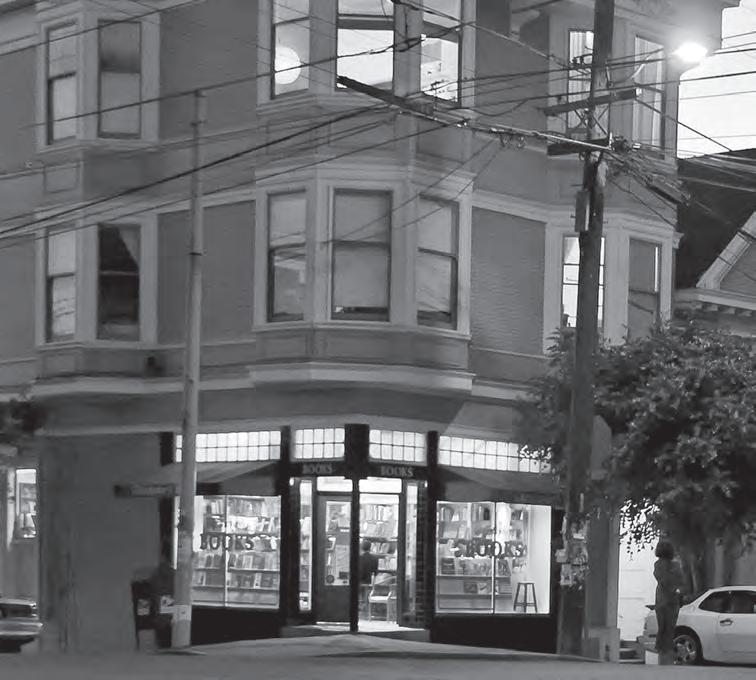
Potrero Hill and Dogpatch are dotted with cafes, restaurants, boutiques, bars and other independent businesses. Some of these enterprises are owned by community residents; others by owners who commute to the area from other neighborhoods or outside San Francisco. It’s often impossible to distinguish which shops are run by someone who lives down the street or across town.
According to Bradley Vaccaro, vice president of the Potrero Dogpatch Merchants Association (PDMA), of the association’s 150 members roughly 90 percent are “locally-owned,” meaning they’re headed by a Bay Area resident. “Community-owned” businesses including Missouri Street-based Everest Waterproofing, which is owned by PDMA president and Kansas Street resident Keith Goldstein also abound in the area, with owners living in Potrero Hill and Dogpatch.
Vaccaro operates his insurance business from the American Industrial Center on Third Street, but when he decided to buy a house, San Francisco, let alone Potrero Hill, wasn’t an affordable option. Roughly a year ago Vacarro moved from a rental on Pennsylvania Street to Sonoma County, and now commutes to Dogpatch. “If I could have everything I would love to live and work in the

same neighborhood,” Vaccaro said. “I prefer to spend my money in Potrero Hill and Dogpatch whenever I can. I like to support the other [PDMA] members. It is harder to do that when I am spending some of my money in the community where my house is.”
Vaccaro has observed that Hill residents like to support locally-owned businesses, though chains like Citibank and Whole Foods are increasingly part of the landscape. Business owners in Dogpatch tend to be younger than Hill merchants, as that neighborhood has only recently
emerged as a commercial hot spot. As fresh businesses arrive, their owners may hail from Marin County, the East Bay, and the Peninsula. The later two locations are particularly viable places to commute from given the area’s easy freeway access.
way.” While De Andrade believes it’s valuable to live near where an owner’s enterprise is located, he knows that a successful business owner with a shop on 18th or 20th streets “can be part of the neighborhood even if they don’t live in it.” Over the years De Andrade has seen how Hill residents support independent businesses that care about the community, no matter where the owner puts away his shoes. He described Goat Hill as a neighborhood-oriented business, where people know who he is when he walks down the street, and the venue serves as a community space. “You can be [a vital part of the community] even if you are not living in the neighborhood,” he said.


Goat Hill Pizza, which has vended pies from the corner of Connecticut and 18th streets since 1975, was started by a group of Hill locals. Co-owner Philip De Andrade and his business partners moved off the Hill when “prices went up” in the mid1980s and “[we all] couldn’t afford to live on the Hill or buy homes at the time.” De Andrade is now on a “liveaboard,” floating on a houseboat on Mission Creek near AT&T Park.
De Andrade values his proximity to his business, which he said “keeps me connected to the neighborhood. I wouldn’t know how to do it any other
San Francisco Locally Owned Merchants Alliance, or SFLOMA, executive director Hut Landon concurred with De Andrade’s perspective on businesses owners. SFLOMA focuses on locally-owned businesses, which, like Vaccaro, it defines as having owners who reside in the Bay Area. “I’m not sure living in the community necessarily makes a huge difference,” Landon mused. According to Landon, other owner-attributes are more valuable, such as knowing customers and having a presence at the store, restaurant or shop. He cited absenteeism as a harmful trait for any owner to have, no matter where they live. “You can be part of a community without living in that community,” Landon said. Landon once owned a bookstore in Mill Valley and lived in San Francisco. “While I lived in the City I don’t think people felt I was disconnected,” he surmised. He has since become executive director of the Northern California Book Association, and doesn’t cross any major bridges to and from home and work.
“I think that it is really important to really understand your community


The Potrero Hill Boosters Association has been engaged in issues impacting the Hill for decades. A historically working class neighborhood that housed much of San Francisco’s industry, the Hill has drastically changed since the Boosters were first organized in 1926. The Boosters focus on local land use changes, public transportation, parks, and schools, advocating for the best infrastructure possible for the community.
Tony Kelly has served as Boosters president since 2003, though he stepped down from his executive duties in 2010 to run for the San Francisco Board of Supervisors in District 10. After Malia Cohen won the election, Kelly returned to his Boosters post, coinciding with an increase in development projects in the neighborhood. “We have a history of working proactively on planning,” Kelly said. The Boosters often serve as a point of contact for City agencies who want community feedback on projects and proposals. The “Boosters end up being the voice of the neighborhood,” said Kelly.
The group has roughly 400 members who pay an annual $25 membership fee. The association’s $10,000 budget is mostly invested in an annual dinner, holiday party, monthly newsletters and monthly meetings held at the Potrero Hill Neighborhood House, which charges a discounted rate for the group to use its space. This year the Boosters received a $2,600 gift, providing a reserve for the first time in the organization’s history.
The longstanding organization attracts a diverse group of participants, though members tend to be older homeowners without kids. Dena Fischer and Jean Bogiages joined the Boosters as a result of their concerns about local schools and parks. Pennsylvania Street
resident Fischer, a 40-something freelance writer and editor, successfully fought to keep Daniel Webster Elementary School open in 2005 when it faced possible closure. The Boosters collaborated with Fischer, then the school’s ParentTeacher Association president, and other parents to convince the school district and Board of Education to open a Spanish immersion program at Webster. Fischer is a founding member of Potrero Residents’ Education Fund (PREFund), a hyper-local education advocacy group.
“I think the Boosters speak up for our neighborhood in a positive and constructive way. The people who live in Potrero know it the best; the Board of Supervisors, the Board of Education, City Hall, they can’t possibly know the issues that individual neighborhoods face as well as the residents themselves,” she said in an email interview. For Fischer the Boosters are a conduit of information and “serve as a focal point where all constituents can have a voice.” Through the Boosters she’s kept abreast on recent parking meter proposals, redistricting, and Rebuild Potrero.
Jean Bogiages has lived in her Utah Street home since 1972. Throughout her years in the neighborhood she’s pushed to improve wasted space near and under the 101 freeway, which bisects the Hill’s northwest section. After she retired last year, she became a Booster member to keep the association informed about her part of the community, and to get insights into a “broader range of issues that affect Potrero Hill.” Bogiages serves as the chairperson of MUNA, a neighborhood group that monitors the area bounded by 17th Street, Potrero Avenue, 18th Street, Utah Street and San Bruno Avenue. MUNA is a watchdog for the Fallen Bridges mini-park and community garden and open spaces on both ends


of the 101 freeway overpass.
Bogiages, who is in her late-60s, and also a Potrero Hill Democratic Club member, sees the Boosters as a connection to the wide range of City services that the Hill depends on. “Our City government structure allows us one supervisor for District 10, which is a large district,” she said via email. “The Boosters, though not part of the official City government, can advise, inform and protest so that the needs of the neighborhoods are considered.”
According to Kelly, the stereotype of a neighborhood association is that it doesn’t want to promote development, but for the Boosters



that’s not necessarily true. “The Boosters want to innovate,” he asserted. Members vote on key issues, although over the years certain core principals have been established. Development has been a reoccurring theme, and each project that comes the group’s way requires careful review. “Potrero Hill needs to monitor the development plans that are put forth by development companies to make sure that the impact of the development on the current residents is not negative,” Bogiages said,
Kelly moderated the March meeting, which was jam-packed with guest speakers. San Francisco Police Department Bayview Station police Sargent Dean Hall spoke about recent crime trends before taking questions from members, who asked about dark streets and car and house burglaries. The conversation then switched gears to development projects. Peter Osborne talked about his revamped Mission Rock Cafe, which he expects to open as the Mission Rock Resort in July (see article this issue). His plans called for the 817 Terry Francois Boulevard building to transform from a party zone to a bar and grill featuring a casual fine dining experience, similar to his other restaurant MoMo’s and sports bar Pete’s Tavern, near AT&T Park.
Developer Dan Murphy presented plans to replicate the American Industrial Center on Hooper Street
Seawall Lot 337, known to San Francisco Giants fans as “Lot A,” will be transformed over the next decade. The Giants, in partnership with Baltimore-based The Cordish Companies, plan to turn the parking lot and adjacent Pier 48 into what amounts to a little village. The 27-acres of land which has been named “Mission Rock” will host as many as one thousand new residential units, eight acres of open space, and between five and seven office buildings. Mission Rock is expected to break ground in 2015, with four construction stages to be completed by 2021.
“From day one of the development of this ballpark we’ve looked for ways to see that this neighborhood not just preserves its charm and its character, but can add to the economic viability of our City and our community,” said Giants president and chief executive officer Larry Baer at a press conference announcing the plan last month. The development will also be a moneymaker for the baseball team, which is grappling with steadily increasing player costs.
Over the years Lot 337 has been the subject of a variety of rumors related to its potential uses. It was

once thought that the Golden State Warriors wanted to build a stadium on the site, but the basketball team was conspicuously absent from the dream laid out by Baer and Mayor Ed Lee, who also spoke at last month’s press conference. “We just have to make sure that the teams here know that they’ve got the backing of the
City to really perform this. And the investors need to know that we are an investor-friendly town,” said Lee, who was nearly giddy when he mentioned the more than 7,000 jobs the project could bring to San Francisco, and the estimated $13 million in tax revenue it may generate.
The Port of San Francisco owns Lot 337, which it rents to the Giants for stadium parking. They’d much rather see the lot developed, historic Pier 48 rehabilitated, and the waterfront used over a new
75-year lease that they’re currently negotiating with the Giants. “This is the most ambitious project that has been done, but it ties in with so many of the objectives of the master plan of the Port,” said Doreen Woo Ho, San Francisco Port Commission president. “We look forward to how it’s going to forge a new business model in terms of the partnership and the teamwork we will do here,” she added.
San Francisco waterfront projects including the recently scaledback America’s Cup race often encounter serious opposition, and concomitant delays. But according to Lee, Mission Rock has been in the works for a long time, and the City departments responsible for approving parts of the project are working as a team. “Seawall Lot 337 is a known entity,” Lee said. “Mission Bay, we’re building on success, we’re not surprising anyone. This is a development site that the Port wished to have this happen. We’re going to play ball,” he concluded.
South Beach and Mission Bay have been subject to intensive development activity over the past decade. Since 2000 San Francisco Board of Supervisors District 6’s population has jumped by almost one-third more than other districts. According to District 6 Supervisor Jane Kim, her jurisdiction is an exciting one to supervise because it’s like “drawing neighborhoods…One of the priorities of the district is developing complete neighborhoods.” Kim emphasized the need for smart development that encourages pedestrians and bikers, public transit, open space, and mixed-income housing as elements of neighborhoods that draw people to invest in a community.


be between 300 and 420 square feet.
Hughes told the commission that she’d spent $8,000 to “properly pad” the play area. Tony Kelly, Potrero Boosters Neighborhood Association president, showed the commissioners pictures of the area before padding was installed over the concrete floor. In the photos the space appeared to get little sunlight, though Hughes told the commission that it’s a “safe, sunny area.” Hughes said that under state law six children at a time can use the space, though according to Kelly only four children would be allowed to play in the area due to its small size. Documents submitted to the commission indicate that the state requires 75 square feet per child in an outside play area. The documents, which were stamped by licensed architect Derrick T. Wu, indicated that the play area is 308 square feet.
Shortly before the commission voted on the issue, Commissioner Kathrin Moore stated that Hughes’ request for a child care license from the state hadn’t been approved. “There is nothing in [the] letter [from the state] that says this is done,” Moore said.
The Good Life Grocery coowner Kayren Hudiburgh told the commission that its decision “affects whether we can keep The Good Life alive.” Hudiburgh and her husband, Lester Zeidman, have operated the neighborhood grocery store at its 20th Street location since 1984. “We have held on tenaciously through the years. We have been anxiously awaiting another anchor tenant.”
501 Connecticut Street’s storefront space, where Hughes is planning to open the child care center, has been vacant for three years. It previously housed Klein’s Deli, an “iconic location” where the sandwiches were named for feminist heroes, said Keith Goldstein, Potrero Dogpatch Merchants Association president. Dick Millet, a Hill resident for 43 years, who once owned a property next door to 501 Connecticut, said Klein’s “became a community magnet. A hanging out place.” Both Goldstein and Millet opposed Hughes’ requested use change.
Some Hill residents are concerned about the fate of the 20th Street commercial strip. “This is a unique opportunity to help
20th Street to former good days,” Zeidman said. Give people “a reason again to shop on 20th Street.” This is “critical to the health of the 20th Street district,” Goldstein echoed. Hudiburgh said that business at her grocery store is good in the evenings, but during the day it’s slow. According to “20th Street Commercial Strip Struggles to Survive” in the March View, all three markets on 20th Street, including The Good Life Grocery, have seen sales go down since Klein’s closed. The owner of the dry cleaning business on 20th Street told the View that her business has declined because there are fewer single people dropping off clothes and more mothers pushing strollers along the street. Hughes told the commission that, based on a survey she conducted, there are 24 businesses on 20th street, “Six are vacant or closed. Eighteen are open. Twelve are in favor of us opening the child care center, two are neutral, two are against, and four did not respond.” Planning Commission president Rodney Fong said that the Hill is seeing a “generational change.”
Roughly 30 residents attended the April commission meeting. About half sided with Hughes, while the other half opposed the proposed change. According to Commissioner Cindy Wu, it was “disappointing to see how contentious this is.” However, Miguel said, “This is a very, very fragile two-block commercial district. I don’t want to see child care there. I want to see retail. I can’t support it. I don’t think it’s a good use.” Commissioner Hisashi Sugaya echoed Miguel’s comments. “I don’t think child care is the right use.” But he added that it’s an allowed use.
During the public comment period, meeting participants told the commission that two other child care centers are opening in the neighborhood. According to Hill resident Chris Lawson, St. Theresa’s Catholic Church has applied for a license to operate a child care center. Lawson also stated that he didn’t believe that 501 Connecticut Street is a “safe space for kids.”
Hughes and a building contractor she hired have asserted that the cost to install ventilation required for a restaurant to occupy the commercial space is prohibitively high. But the operator of Chat’s, a coffee shop and eatery on 18th Street, who attempted to open a second Chat’s at 501 Connecticut Street, said there are “two possibilities for exhaust.”
Luna Textiles, founded by Anna Hernandez, has been located on the American Industrial Center’s second floor since 1994. Hernandez began her business like many: finding a niche and filling it. But she had a tough time securing her first small business loan, having to present a business plan and explain what “textiles” means. She convinced a fabric supplier in New York—with which she had developed a relationship at her prior company—to create some custom samples for her to help her get started.
“I was up against another womanowned company that was making flavored mayonnaise.” explained Hernandez. “Knowing that everyone knows what that is, but few grasp what textiles are, I asked for and received an opportunity to meet with the senior loan officer in person. I was given five minutes to plead my case. I draped my sample fabric over the side of his cubicle to give him a true sense of what it is that I want to base my company on. I got the loan.”
With borrowed money in hand, Hernandez traveled to New York and began knocking on key suppliers’ doors. She found one who’d launched his company just two years prior; the two businesses have grown together ever since. With her supplier lined up, she used her keen sense of design and understanding of fabrics to land

prestigious furniture maker Herman Miller as a client. Once this allegiance was established, other customers knocked on her door. Although large furniture companies often have staff who provide similar services, according to Hernandez, “We design all of our fabrics and we’re better.”
The youngest textile company in the United States, Luna Textiles has 25 full-time employees, with offices in San Francisco, Chicago and New York. Roughly the same number of people represent Luna’s products as independent contractors. The company has grown every year, even through economic downturns. The key to its success are strong commitments to the basics: high quality, unique offerings, partnered with attentive customer service. When the company comes up with a design it likes, it may have some sample yardage created, make a few pillows in the warehouse and toss

PARKING from page 4
general,” but “at least the agency is responding and it apologized for the delay in responding to the group’s letter.” ENUF’s core working group continues to hold organizing meetings, and the group is close to finishing its first parking survey. “Northeast Mission has revived the voice of the business community,” Lum said.
According to Reiskin’s letter, the agency’s “timeline indicates the start of the process, not the end. If necessary, we may adjust the schedule and will, of course, keep you informed of any changes.” SFMTA is “currently developing plans for additional data collection to refine the proposals and overall program evaluation and will seek your review and feedback on those plans. We will also gladly review any data collection protocol and results that neighbors themselves develop.”
REDISTRICTING from page 4
Hill resident Portola residents admire their soon to be former supervisor for standing up for their interests. “We never expect anyone from downtown to actually come up there and pitch for us directly like that. We were taken aback by that,” said Jusino. “She still has to go back and get reelected. I think she knew very well the risk that it posed and I laud her for that,” he concluded.
South-of-Market-based Hyperink Press founded by Stanford University alumni Kevin Gao specializes in condensed versions of hardcover works or topics of popular interest. Hyperink targets the titles it digitally publishes based on consumer demand, catering to shrinking attention spans with 20 to 75 page books. One of the startup’s investors is Kenneth Lerer, chairman and co-founder of The Huffington Post
“Hyperink is very similar to traditional book publishers in that it wants to produce titles that will sell well,” said Gao. The company uses Internet search data to identify potential book subjects likely to find readers. “We work on an in-demand model for identifying topics. We use several metrics to determine which topics have a high interest value that we can convert into profitable titles. Our data-driven demand-side model is all about turning a profit.”
Hyperink emerged after Gao self-published an eBook titled The Consulting Bible. The guide, which focused on how to get a job at a prestigious consulting firm, generated $200,000 in sales. Gao had just departed management consulting firm McKinsey & Company, and didn’t
have time to write a lengthy manuscript about the process of getting hired by the firm or its competitors. Instead he distilled key topics into core essential elements. Gao sold the eBook for $25 online; the title was an unexpected success.
Gao realized that he could do the same with other hot topics, and Hyperink was born. Hyperink has had success with books on how to gain admission into an Ivy League school, investment banking careers, and how to start a mommy blog. “Consumers are busy, and while 200 page books are great they want the critical information shrunk down to 20 to 75 pages,” said Gao. “Our content is expert driven and unique, which gives us another advantage.”
The startup was launched in 2011. To date it’s published more than 200 titles, and is increasing its production volume as it expands into new subject areas. Currently, its books fall into one of a half-dozen niche areas: education, health, fitness, technology, current events, and entertainment. “We chose to relocate to San Francisco from Palo Alto because of the cosmopolitan culture in the City,” explained Gao. “It helps us recruit top talent because potential employees in Michigan and New York are most excited to live in San Francisco.”




When asked whether he had any regrets about leaving the blue chip world of McKinsey, Gao responded that he’s always loved books. “I knew leaving McKinsey was a risk but I had real hunger to design and build something to call my own and make an impact by answering important questions in people’s lives,” said Gao. “Had I stayed at McKinsey it would have been the reliable route, but my choices have validated my instinct that there was definitely growth and opportunity in the digital publishing space after my success with my eBook. I spent quite a bit of time in college and at McKinsey pursuing this passion for books, so I found a way to translate that into something innovative to the industry. Part of our success has been great timing and a delivering a well-launched product.”
Hyperink currently publishes only in English, but Gao plans to expand to other languages, as well as offer audio formats. Hyperink is constantly recruiting writers for its roster of journalists and subject matter experts to meet its goal of producing 100 titles a month. “We are looking for writers who are innovative and have unique knowledge with commercial value. For example, if the writer is an expert on all the best cafes in Europe, then we would be interested in them. We can’t pay quite as much as traditional publishers, but our royalty compensation is quite generous because we experiment with different formats that we can sell a book in.”











Volunteer to work in a concession stand at the course, enjoy some golf, meet new friends, and help raise money for McKinley Square. This
We

DANIEL WEBSTER from Front Page
assistant superintendent Veronica Chavez. The district may decide whether to adopt the proposal this month. If approved, the change could be phased-in over two years, including an initial period in which the Maxwell campus would temporarily house kindergarteners through eighth graders while the Missouri campus is renovated as part of the 2011 Proposition A bond program to modernize San Francisco public schools. Kindergarteners through second graders would return to the Missouri Street campus the following school year. According to Stacey Bartlett a Webster parent, Potrero Kids at Daniel Webster (PKDW) preschool’s administrative director, and, with Daphne Magnawa and Leora Broydo Vestel, MSTF coleaders the task force hopes that the proposal can be adopted this fall. SFUSD executive director of public outreach and communications Gentle Blythe stated that no changes would be made to Webster’s grade configurations until after the 2012-2013 school year.
Webster parents are pushing for expansion in part because of their disapproval of the middle school feeder pattern SFUSD announced last June, which directs graduating fifth graders from Webster and nearby Bryant Elementary School to ISA, the district’s only combined middle and high school. Webster parents are concerned that ISA’s current configuration fails to provide a stable, safe environment. Bartlett worries that the sixth- to 12-grade model pressures children to mature too quickly. “Kids naturally gravitate towards people that are older than them and want to model their behavior,” she explained. “Why would you want to rush an 11 year-old to start acting like the high school girls or boys do?
Can you imagine sending your 11 year-old daughter to school with 19 year-old boys?”
Alise Adams, a morning and lunchtime monitor at Webster with children attending both Webster and ISA, agreed. “Once they get
little extra help,” said Bartlett.
Edward Hatter, the executive director of Potrero Hill Neighborhood House, who often works with ISA students, doubts whether many students from these vulnerable communities would attend a reconfig-
“The research shows that K-8 schools meet the needs of the child better than K-5, so I’m totally for it.”
First-grade teacher at Daniel Webster, Ana Lunardi
up in those ages, [they’re] living a whole different lifestyle,” she said. A K-8 grade setup, on the other hand, would enable middle school-aged students to stay children longer, acting as mentors to younger students rather than being exposed to and potentially adopting risky adolescent behavior, Adams said.
Ana Lunardi, a first grade Spanish immersion teacher at Webster who has been with SFUSD for 22 years, supports the proposed K-8 structure. “I think it is a fabulous idea,” she said. “I’m a person who believes in the whole child, not just the academic, but you have to look at all child’s needs. The research shows that K-8 schools meet the needs of the child better than K-5, so I’m totally for it.”
Keeping students, including siblings, with the same peer group for longer time periods contributes to a stable social environment, and is convenient for parents with more than one child, explained Bartlett. A K-8 grade setup also makes it easier for teachers to sustain relationships with students and work with their previous educators to monitor their progress. This continuity could especially benefit students from the Hill’s vulnerable communities. “We think it’s a better solution for all kids, but especially kids that need a

ured Webster. Historically, Webster drew students from the Potrero Annex-Terrace housing complex, he said. Although Webster has a culturally and ethnically diverse student population, Hatter has noticed the number of Annex-Terrace children at the school dwindling over the years, a trend he worries will continue. In 2011, SFUSD shifted the attendance area for Annex-Terrace residents to Starr King Elementary; as a result housing complex residents now increasingly send their children to that school.
Besides ISA’s configuration, Adams complained about the school’s lack of discipline and adult supervision. One of her daughters, a sixth-grader at ISA, is constantly bullied. “Every day practically, she’s calling me, or the school is calling me, about these girls wanting to fight her—not just verbally, but physically,” she said. Adams, who drops off her daughter at ISA every morning, described students’ routinely disrespectful behavior, including yelling and swearing at each other and even at teachers. Meanwhile, teachers and other staff members ignore such behavior, she said, and interact with students as friends instead of as authority figures. “It’s like a bunch of kids running the school,” she said. She recounted
how a student called her daughter a name in front of both her and her daughter’s teacher. The teacher, however, did nothing to address the situation. Although Adams has met countless times with numerous staff members, little has changed. The conflict resolution meetings that the staff organizes between the students involved and their parents are similarly ineffective, she said, with fights inevitably flaring up again within a day or two.
The routine bullying and classroom disruptions have taken a toll on her daughter. “It has changed her grades, it has changed her personality,” she said. “It’s like night and day.” Adams wrestles with transferring her daughter out of ISA, but is worried about subjecting her to the stress of adjusting to a new school. “I don’t think I should ever have to worry about her,” she said. To Adams, expanding Webster is a more feasible option than trying to improve ISA’s deeply entrenched conduct issues, which could take several years.
Hatter agreed about the level of misconduct at ISA roughly 30 percent of its students have been identified as having behavioral problems but pointed-out that such problems are inevitable in a largely low-income population. “Poverty brings problems,” he said. “Are [the teachers] going to start taking [the students] out into the yard and beating them?” asked Hatter. “Their hands are tied, especially when the school is integrated with a lot of children with problems.”
Magnawa expressed concerns about the lack of academic support at ISA. She pointed-out that ISA has no middle school leadership at the district level; normally each of SFUSD’s middle schools is served by a superintendent. Although ISA

MAKE IT SHINE—There is nothing more important than ensuring your home is clean.
LIGHTEN AND BRIGHTEN—If it is time to repaint, consider lighter colors that will make your home brighter and feel more spacious.
OUT WITH THE OLD—It is easy to accumulate clutter even after just a few years. Donating or discarding unneeded items can make a home feel more spacious—and make your future move easier.
DON’T FORGET SMALL THINGS WITH BIG IMPACTS—Simple steps like painting the garage floor or planting bright flowers near your home’s entrance are easy and inexpensive ways to make a home more welcoming and tidy.
If you are thinking about selling your home, call me at 415-710-9000 for a free copy of my 2012 Potrero Hill Real Estate Report.


This booklet includes:
• Sales Prices for All Potrero Hill Homes Sold in 2011
• Why Prices are Rising on the Hill
• What Potrero Hill Buyers are Looking For
• How to Prepare Your Home for Sale
has a high school area superintendent, the individual serving San Francisco middle schools, assistant superintendent Jeannie Pon, has no jurisdiction over ISA’s middle school students. If Webster expands, a K-8 area superintendent would provide middle school and elementary school leadership.
ISA also lacks a Spanish immersion program. As a result, the language education of Webster immersion students—about a third of the school’s pupils—would be cut short before they’ve had a chance to become bilingual, a process that normally takes about seven years, said Webster Principal Moraima Machado. Under the proposed expansion, Webster students could continue Spanish immersion through eighth grade.
Bartlett added that although the district typically tried to ensure that the elementary schools and their designated middle schools represent varying performance levels, Webster, Bryant, and ISA all struggle academically. If ISA were a traditional three-year middle school, Bartlett believes that she and other community members might be able to improve its situation. However, she doubts that any parent would take on the endeavor of overhauling a struggling seven-year combined middle and high school. “There are too many grades to fight through, too much of an unknown to overcome,” she said. To improve ISA, Bartlett believes that, rather than allowing Webster fifth graders to, as Bartlett put it, “walk the plank” year after year, the entire Webster community, including students, teachers, and families, need to enter the Enola Maxwell campus together, “in effect, seed the school to be truly Daniel Webster,” she said. “I think that would do a lot.”
The proposed expansion would double Webster’s enrollment capacity, said Bartlett, increasing Spanish immersion and general education programs to include three classes per grade level in kindergarten through third grade, and two classes per grade level in the upper grades. Increasing Webster’s enrollment would raise the funding it receives, and thereby the amount of money that could go toward additional academic support, such as computer teachers and literacy specialists. This could mean that parents like Adams would no longer have to travel far to schools that offer resources for children in need of extra attention. Adams has to send one of her sons, who has attention deficit hyperactivity disorder (ADHD), to Dr. William Cobb Elementary School in Pacific Heights, which provides special services for ADHD students. “The [services] we need, our neighborhood school doesn’t have [them],” Adams said. “Either the kids don’t get it, or we bus the kids off… I’ve never had kids far away. That’s an adjustment for me and them.”
Increasing Webster’s capacity would also allow the school to
serve more families in Webster’s attendance area, added Bartlett. According to the most recent Census, in 2010 there were 206 fouryear-olds in the area, which spans the South-of-Market and Potrero Hill neighborhoods. That cohort began kindergarten in 2011, 148 of them most likely at a public school, based on the San Francisco chapter of Parents for Public Schools estimate of a 72 percent public school attendance rate for the City’s school-aged children. In 2015, the number of kindergarteners in the area is expected to surge to 444, 320 of whom will likely attend public school. Webster has space for only 66 kindergarteners. Although not all of these kindergarteners’ families will request Webster in SFUSD’s lottery, the school could barely accommodate 15 percent of them. The disparity between Webster’s capacity and the number of children in its attendance area is likely due to the fact that SFUSD drew attendance lines based on 2000 Census data, when there were only 86 four-yearolds in the area, explained Bartlett. “There are so many families,” she said. “How are you going to say, ‘We have no elementary school for your children,’ or ‘You’ve got to cross Market?’”
Hatter agreed that the district looked mainly at Census tract numbers instead of the makeup of the communities. However, he doesn’t see how Webster can increase its capacity, or add specialized services,
assigned to more than one middle school, Webster’s is assigned only to ISA. And while families can still choose among all middle schools in San Francisco in the lottery, Adams and Bartlett believe that Webster parents should have more options in their immediate area. “There’s more children in the area than there used to be,” Adams said. “We need another school in our area or more access to schools in our area.”
Adams said that the district has expressed concerns that MSTF is trying to “shut out” AfricanAmericans, many of whom currently attend ISA. “I haven’t heard anything of the sort,” said Adams, who is African-American. “I’m around these people every day…We’re all like family.” She added that although the parents who attend the expansion proposal meetings are predominantly European-American and Latino, Webster has notified all parents of the gatherings. “If we can’t get African-Americans to school meetings, we shouldn’t disturb the parents that are fighting,” she said. “I’m trying to get more African-American parents to come to the meetings, to speak up, to see what it’s like, to see how the children work…but there’s only so much you can do.”
Magnawa stressed that her and other parents’ opposition to the ISA feeder pattern stems from the school’s sixth-12th grade configuration, as well as its weak academic programing. “When we say things
A K-8 setup makes it easier for teachers to sustain relationships with students and work with their previous educators to monitor their progress. This continuity could especially benefit students from the Hill’s vulnerable communities.
Stacey Bartlett, co-leader of the Daniel Webster Middle-School Task Force
when district funding is based on the number of students attending. Even if it moves to the Maxwell campus, if Webster continues to face enrollment problems it won’t receive the funding needed to increase its capacity, Hatter pointed-out. Currently Webster is under-enrolled even with Spanish immersion. ISA is also severely under-enrolled, even with the middle and high school grades combined. “The numbers just don’t jive…I can’t see the plan working,” said Hatter.
Although Webster is underenrolled, the number of families listing Webster as their first choice in the Citywide public school assignment lottery has increased each year since 2009, after Bartlett and other parents rallied to save Webster from closure by initiating PREFund and the Spanish immersion program. This year, with the announcement of the ISA feeder pattern, the number of first-choice requests dropped. Bartlett and Magnawa reported that 16 students have left Webster since the district announced the feeder pattern, with the majority of their parents citing disapproval of it. Although other attendance areas are

like ‘ISA is not the school,’ we do not mean the students [or] the administration of the school,” she said. According to Adams, the problem lies not in the staff but in the lack of supervision. “I have no problem with what the teachers are teaching,” she said, “just them not stepping up and making the kids stay in their place and making sure it’s a safe environment for my daughter and every child that’s there.”
Bartlett also clarified that, in proposing to house third to eighthgraders at the Maxwell campus, Webster parents aren’t trying to exclude ISA students, and, in fact, invite anyone of middle school age to join their school community. “Our goal is to keep us together and not have people leaving to go to other schools or leaving the City,” said Magnawa. “We want to keep our community whole.” MSTF hasn’t discussed whether or how to integrate ISA staff into the Webster middle school program, but Bartlett is open to the idea. “I’m game for anything,” she said. “I don’t want to displace anybody, I just want something that’s a viable option.”
Although Webster parents claim
they have no issues with ISA students and want to welcome them into their community, Hatter believed the opposite is true. Parents proposed the expansion with the desire of “putting [their kids] in an environment they feel comfortable with,” he said, which he believes translates to, “‘I’m not putting my kids with those kids, so let’s come up with a plan.’” Task force members strongly disagreed with this assertion, maintaining that a 6-12 model isn’t workable for children of any race, and that more than half of Webster’s students who are 50 percent Latino, 20 percent African-American, 17 percent European-American, and 2 percent Asian-American qualify for a free or reduced price lunch. Hatter countered that the proposed expansion, which he believes is a “takeover,” would displace students. MSTF has not made plans for the high school students who would need to leave the Maxwell campus if it transitions to its new configuration, a process Bartlett said would have to be managed by the district. “We are not really privileged into inside [district] discussions,” said Bartlett. “We do know that the majority of high schools have room, especially those that are geographically close, so seems like it would not be an issue for nearby schools to absorb them.”
“[MSTF] is racing to a solution instead of thinking and plotting out a situation that’s good for everyone,” said Hatter. Although MSTF launched an outreach effort that garnered support from Webster teachers and staff, the Parent-Teacher Association, English Learners Advisory Council, as well as the Potrero Boosters Neighborhood Association, Bartlett said that MSTF hasn’t been in dialogue with ISA. “I think [the proposal] is still unbeknownst to many if not all parents at ISA,” said Hatter. “At ISA, it’s just business as usual.” He added that ISA teachers are most likely also unaware of the proposal, and many have probably dismissed it as a rumor. ISA Principal Paul Koh declined to comment on the proposal for the View
Further sharpening divisions between the Annex-Terrace housing complex and the more affluent Northern Slope are SFUSD’s
is the landfill, but the company will be taking over that element in 2015. Landfilling is the only part of the waste disposal process that the City competitively bids. Recology won the contract last year to transport waste to their landfill near Yuba City.
Kelly is also concerned that the City doesn’t have a contract with Recology, which would protect it from changes in service and broken agreements. “We have a permit, but not a contract,” said Kelly. “And anyone who has ever dealt with land use stuff knows you need both.”
Recology’s permits derive from a 1932 law that was originally drafted as a way to regulate the dozens of “garbage collectors” that were running amok in San Francisco during the Great Depression, competing for collection rights in the same neighborhoods and generally providing terrible service. To fix the problem, City voters passed the Refuse Collection and Disposal Ordinance, which divided San Francisco into 97 fixed routes with a permit for each that gave exclusive rights to the permit holder to transport waste through the streets. Over time one company, now known as Recology, bought up all the permits until they became the City’s sole provider of waste collection services.
Without a contract, the City can’t demand a franchise fee, a standard practice in many other municipalities. According to a 2011 report prepared by consulting firm R3 for the Local Agency Formation Commission, of 71 Bay Area cities all but San Francisco had franchise agreements with their waste disposal provider, whether they used a competitive bidding process or not to choose the company. “San Francisco is the only jurisdiction that controls exclusive residential and commercial collection services through the use of a permit process,” the report noted.
The “No on A” campaign, which is largely funded by Recology, argues that a franchise fee isn’t necessary because Recology pays other types of City fees. In addition, the company asserts that it provides many free services that more than make up for the lack of a franchise fee, including bulky waste and household hazardous waste collection, and free or reduced rates for City facilities. However, the fees and services combined make up only 14 percent of Recology’s profit. In comparison, San Mateo’s fee/service percentage is 18 percent and Oakland’s is nearly 31 percent. San Jose’s is a little less than 10 percent, but that city pays much lower rates per capita than San Francisco; San Francisco’s rates are more than double San Jose’s on a per capita basis.
According to the “No on A” campaign, the City’s current garbage rate structure, under which rates are approved by the City Rate Board, is the least political and fairest way to regulate prices. The Rate Board is made up of the City Administrator, the City Controller and the San Francisco Public Utilities Commission’s (SFPUC) director. Recology proposes rate hikes on a “cost plus” basis; they
have to demonstrate all their expenses are necessary and then add on profit.
According to Kelly, the Rate Board has increased residential garbage collection rates 136 percent in the last 11 years. “You will never be less protected against rate increases than you are right now,” he said. “Recology would love you to be scared about rate increases under this measure. What’s the difference? You don’t have any protection now,” he concluded. Commercial rates are completely unregulated.
A 2011 Legislative and Budget Analyst report to the San Francisco Board of Supervisors similarly noted weak oversight of garbage rates. The Board of Supervisors must approve water rate increases proposed by SFPUC. Proposition A proposes a similar model for garbage rates. “No on A” counters that moving approval power to the Board of Supervisors would “politicize” the process, whereas the Rate Board is comprised of professionals working in consultation with independent consultants who don’t stand to gain politically from the issue.
Kelly believes that the Rate Board is political because those professionals work for politicians. “It isn’t a political process, it’s a legislative process, one that Recology manages very well in many other cities,” he explained, in defense of moving rate approval to the Board of Supervisors. “And if you think the supervisors are approving rates that are too high, at least you can vote them out, unlike the current Rate Board,” he wrote in an email.
“The current system has produced remarkable success,” said Adam Alberti, “No on A” campaign spokesman. “Does it have monopolistic character?
Yes. All of these contracts within the industry do. It’s because there is a fundamental benefit to consolidating the infrastructure to servicing the waste and recycling needs of cities. Not having that means multiple service providers, inefficiencies, and redundancies,” he continued. Many other cities do choose to have only one company collect their garbage, but it’s rare that a company has an unlimited agreement with a jurisdiction and no contract.
Because of the wording of the 1932 ordinance, Recology is the only company permitted to operate the transfer station, where garbage is packaged and sent to the landfill, as well as the only company that can transport refuse to the landfill, because they have exclusive rights to convey garbage through the “streets of the City and County of San Francisco.” The transfer station is located on private land that Recology owns. Transfer station operation and the right to transport refuse to the landfill could be put to a competitive bid if the 1932 law was repealed by Proposition A passage.
According to Kelly, it’s likely that Recology would win several of the five possible contracts if they bid for them because they do a good job and have high approval ratings from their customers. Under the proposition one company could win four out of five of the contracts. However, operating both the transfer station and owning the landfill wouldn’t be allowed.
Kelly said that would be a conflict of interest because the transfer station decides what goes to the landfill, and the landfill owner charges the City for dumping. He’s afraid that if one company owned both facilities the City’s recycling numbers could drop.
The R3 report noted that San Francisco has become a model for recycling and compost collection, with a landfill diversion rate of 77 percent. “San Francisco is a recycle-first city and Recology has fully adopted that approach. That’s its entire reason and purpose for existence,” said Alberti. “There is no evidence anywhere that these things would benefit anybody, other than that it would be different.” Proposition A would be “disastrous public policy,” he concluded.
Kelly doesn’t agree, but understands that Proposition A has an uphill battle. “It is David versus freakin’ Goliath. And right now we are looking for a sling shot,” Kelly joked. “They’ve got millions, we don’t. And I don’t know how to overemphasize don’t,” he chuckled.
Proposition A isn’t being supported by the City’s unions. Recology is an employee-owned company, and is known for treating its staff well, a point Kelly conceded. Kelly thinks labor is holding-out against the measure because they’re worried that a non-union company could win the contract. “There was not representation from organized labor in drafting this measure. And that is usually what you do on something that affects a lot of union members,” conceded Kelly. But he doesn’t believe the initiative is anti-labor, but is rather pro-worker, by requiring wage and benefit criteria be included in the City’s request for proposals, favoring local hiring, and making sure there’s a contract to protect against a winning provider leaving the City and taking jobs with them.
Kelly would also like to see Proposition A passage force the dump to move from Tunnel Road which he claims is hazardous to Little Hollywood residents’ health to City land at Pier 96, where Recology already
has a recycling facility. The initiative doesn’t mandate that move, but Recology owns the Tunnel Road facility, and a City-owned processing and transfer facility would need to be on municipal land. By making this shift Kelly argued that the City would be able to ensure that associated jobs stay in San Francisco, and increase efficiency, because the transfer and recycling stations would be near one another for ease of separation and proper materials handling. Since the City would own the dump, transfer station operations could also be competitively bid. The “No on A” campaign insists that such a move would be expensive and create inefficiencies.
“Somehow they have all the establishment support at City Hall. We are completely up against it,” said Kelly. Indeed, the “No on A” campaign is endorsed by a host of political bigwigs, including the Democratic and Republican parties and several supervisors. District 10 Supervisor Malia Cohen hasn’t taken a stance on the issue. According to Kelly, Recology’s strategy has long been to cozy up to people in powerful positions. That backfired against them in San Jose, when bribery charges were brought against the company, which was then known as “Norcal Waste Systems.” The charges were dropped, but San Jose’s Mayor Ronald Gonzales resigned over the scandal. In San Francisco, Kelly said,” It’s not illegal; it’s just corrupt as hell.”




Six years ago a group of 25 kindergartners arrived at Starr King Elementary School to be immersed into the then-fledgling Mandarin language program. The students are leaving the school this spring as bilingual speakers. The successful program has paradoxically increased the school’s performance enough to cut federal
eighth graders, based on students initially educated at Starr King and Jose Oretga elementary schools.
At a morning assembly Lee congratulated the school, and acknowledged the fifth graders’ high academic achievement. Some fifth graders spoke in both English and Mandarin about their experience at Starr King.
The mayoral recognition marks the school’s prominence as a pioneer
“Immersion is this remarkable win-win situation for the district and families. (It) uses the carrot of immersion to attract parents to schools they never would have looked at.”Beth Weise, parent of two Mandarin Immersion students at Starr King
funds once the first-graduating class heads to middle school.
In March, Mayor Ed Lee visited the school, which is located next to Starr King Open Space at 1215 Carolina Street, to commemorate the success of one of only two Mandarin elementary school immersion programs offered by the San Francisco Unified School District (SFUSD). The immersion initiative will continue through middle school at a newly-established program at Aptos Middle School. Aptos’ graduating class of 2015 will be SFUSD’s first Mandarin-speaking
in language-immersion According to Renee Tan, when her son entered the program at its inception there were five Mandarin immersion programs nationwide; today there are as many as 70 at schools across the country. Starr King’s program garnered national attention, including coverage on CNN.
Starr King offers two immersion classes and one general education class, with little English spoken to students in the first few years of immersion, followed by a 50/50 split between the languages in fourth and fifth grades. SFUSD now has three immersion pro-

SUMMER 2012
CALIFORNIA COLLEGE OF THE ARTS
CCA EXTENSION
SUMMER 2012
Offerings range from one-session workshops to more comprehensive courses.
Register early to ensure your place in class.
San Francisco campus
1111 Eighth Street (at 16th and Wisconsin)
Oakland campus
5212 Broadway (at College Avenue, near Rockridge BART)
cca.edu/extension
CERAMICS
DRAWING
GRAPHIC DESIGN
ILLUSTRATION
INTERIOR DESIGN
JEWELRY / METAL ARTS
PAINTING
PHOTOGRAPHY
SOFTWARE COURSES
grams in Cantonese, but as one Starr King parent explained, Cantonese is similar to learning Portuguese when trying to get by in a Spanish-speaking country. Mandarin, although one of the world’s toughest languages to learn, is one of the most commonly spoken. The program jumpstarted Starr King, which in 2005 had just 175 students. Today, nearly 400 students are enrolled at the school.
graduation trip for her fifth grade son, Jet Chinese name “Jian-Aty” and fourth grade daughter Skylar, whose Chinese name is “Ting-Ting.” Tan said as part of immersion students use either a Chinese name from their families or one that’s given to them at school. During her family’s trip to China the children will surpass their parents with their superior language skills; Tan admitted to being proficient in Mandarin numbers and colors.
Tan placed her oldest child in Starr King’s Mandarin program when “there were no teachers, classrooms or a curriculum; just a vision.” Tan had attended district meetings when

Beth Weise, mother to fifth grader Ellie and third grader Margaret, is European-American, and appreciates the rigor of learning Mandarin after what she described as three “grueling’ years studying the language at the University of Washington, Seattle. She also likes how the immersion program benefits the public school system. “Immersion is this remarkable win-win situation for the district and families,” she said. “(It) uses the carrot of immersion to attract parents to schools they never would have looked at.”
Weise admitted that Starr King wasn’t on many parents’ radar in 2005, with its declining enrollment and bottom-scraping test scores. A Glen Park resident, Weise hadn’t been looking at the Potrero Hill school. Now, less than a decade later, she said, “The district has created this wonderful possibility for students in the program.” Weise credited the immersion program for her daughters’ perfect accent and tone. “They have the grammar in their bones and understand sentence structure.”
Like many families learning a Chinese language at American schools, Weise decided to put her kids to the ultimate test: a trip to China. Tan, a Hill resident, is planning a post-
the program was being considered by a task force and her son was only three years old. Mandarin immersion was eventually realized when Starr King was named as the program’s host in 2005, taking its first immersion students the next year. “I’m lucky to say we are graduating,” Tan said. She’d believed in the program based on the success of similar Cantonese programs in the City, such as Alice Fong Yu Alternative School in the Inner Sunset.
Although the program was placed at a neighborhood school, Tan’s said she was willing to drive anywhere for the opportunity. With in-laws who speak Mandarin, and potentially greater career opportunities for bilingual and Chinese language-savvy job seekers, Tan was determined to have her children be part of the program even if each year it required new teachers, new curriculum and new materials. She also saw the potential for students to improve in a program that was more rigorous, had more homework and greater repetition than general education. Mandarin program students learn to write at least 100 or
see STARR KING page 24

“My car was stolen two weeks ago,” said Alise Adams, Daniel Webster Elementary School’s noon monitor. “[I was] down, but one morning the kids waved at me from the bus and that lifted my spirit.” Adams is on campus each morning before the school day starts, ready to meet students who are dropped off by working parents. Before the school day starts the kids play games, make art, or read books. “Sometimes I read to them, and sometimes they pick-up books on their own,” Adams said. “I address them as ‘my beautiful children.’”
“The kids ask, ‘Where’s Ms. Alise? Where’s Ms. Alise?’” said Moraima Machado, Webster’s principal. “On the school buses the kids wave “hi” to her. She has a lot of love for the kids.”
“Every parent wants their child to go to school and be safe,” Adams said. “A place where they learn the curriculum and social skills.” Adams is concerned about the levels of aggression exhibited by children, especially those growing up in lower-income neighborhoods. “We need more people to address this,” Adams said. “[Low-income families] are always in need,” she said. “Some people are dependent on welfare. We need more people and more space to help the children relieve aggression in positive ways. Otherwise kids express the aggression in horrible ways. Aggression keeps them from focusing on what they need to do.”
Adams is a mother of eight children, and a grandmother of two. She has three children enrolled at Webster: Raquel is in fourth grade, Aniah, second, and Asia in kindergarten. One of her sons is in second grade at Dr. William Cobb Elementary School, which provides greater resources than Webster for children with particular needs. Raquel, Aniah, and Asia participate in Webster’s after-school programs: Raquel plays basketball; Aniah soccer. “I have a wonderful family at home,” Adams said. “We all stay close-knit. My husband and I stress school. That’s something we do as a family.”
Her oldest children, Donnell, 25, and Travis, 17, are learning trades. “One will graduate soon,” she said. “He is getting certified to clean up hazardous spills and recently earned his forklift license.” Her daughter, Tatiana, attends Lincoln High School; Emani, is enrolled at International Studies Academy.
Bullying is a pet peeve of Adams, in part because she was bothered as a child. “I’m a parent first,” she said. “I should always be secure that they [the kids] are safe. So long as I am around here, there will be
no bullied or harassed children or children left alone. The code of conduct should be very strict and very organized.”
The school district hired Principal Machado in 2006; Adams started at the school in 2011. Marchado believed that Webster needed a morning supervisor. Adams offered to volunteer, but the school was able to pay her. “What’s amazing is she wanted to help the kids,” said Machado. “She wants to make a difference. She knows the kids from the neighborhood.”
“She has a really good rapport with the kids in the neighborhood,” said Esther Schlocker, who works with Adams daily before school and at lunchtime. Like Adams, Schlocker is a noon monitor, and has the same duties as Adams.
Adams was born and raised in San Francisco. She and her family moved to Washington State for nine years to care for her mother, who was battling cancer. She’s been back in the City for four years. Before working at Webster, she volunteered at the school, which helped her secure her current job.
According to Adams, since she comes from a low-income family it’s easy for her to relate and understand what similarly situated youth experience. “Some people don’t understand the struggles are there. I walk in the same shoes [as the kids].” Serving as a school monitor is her “way of giving back to stay positive. Not just for her children, but for all children. “It’s a wonderful job, and I wouldn’t change it for the world,” Adams said. “This is my second family.”
Adams works four hours daily. Besides the before-school program, she monitors students during the school’s three lunch breaks. Adams helps kids open their food trays, cleans tables, and makes sure students eat their meal. She also works in a fourth and a fifth grade classroom, one of which her daughter attends. “I provide oneon-one attention. I help them get their homework or classwork done. I walk through school and help mediate between kids.”
“We need more safety in the cafeteria,” Machado said. “The kids really relate to her. The cafeteria now has a family feeling. They listen to her.” Adams said she steps in when a child is mouthing off at a teacher or other school employee. “Being able to be with my kids at school, it’s a life lesson.”
Half of Adams’ salary is paid by the San Francisco Unified School District; the other half by Webster’s Parent-Teacher Association. “We need parents and the school district to support this,” Adams said. “They are depending on us to make it right for them. It’s a wonderful school.

I have wonderful co-workers. It’s a very family-oriented staff and student-body. Everybody on staff is close. It’s important for the staff to get along. It’s important for the kids to see this too.”
“She has a lot of love for the kids,” Machado added. “They know that she cares.”
“We’re trying to transform the school…we’re trying to regroup the school, making sure the kids have more activities and are safe,” said Adams. “We have a participating principal, which is good. My goal at the end of the day is for my child
and every other child to have a great experience. Elementary school time is so important since the kids are just entering school.”
Adams believes that learning begins at home, and continues at school. “Safer schools lead to a safer community and safer people,” she said. “You have to teach kids how to defend themselves, but you have to be a good person. I believe every person is good until they show you different.”
“She’s a great asset for our school,” Machado said. “I want to keep her for the coming years.”
Long time San Francisco resident and local business owner Rick Cole has worked in the automotive industry for over 20 years. He takes pride in helping his community by offering quality used auto parts at a low price and collecting used motor oil and filters from the public. Rick became a used motor oil collection center to help keep his neighborhood safe from exposure to the toxic effects of hazardous waste contamination. While doing so, he has generated publicity and additional revenue for his business.

The benefits of becoming a Used Motor Oil and Filter Collection Center are environmental AND economic. Your company can grow its green credentials and help prevent contamination on city streets. Collection Centers offer Do-It-Yourselfers (DIYer) the option of safe disposal as opposed to abandoning it on a city street. Storm drains and surface waters are protected as well. With each gallon of used motor oil collected from a DIYer, your business can receive $0.40. In addition, for each gallon of oil generated from business activity, you can receive $0.16. For each gallon of used motor oil recycled, at least one million gallons of water is protected from contamination.
The oil filter is recyclable from the outer steel casing to the rubber o-ring seal. With the majority of oil filters enclosed in a steel casing, the metal is sold to scrap yards to be reused.
Becoming a Collection Center is easy. First, an application is completed. Once approved, your business must accept used motor oil from the public at no charge and notify the public through

Mondays in May
Dance: Zumba at the Nabe
Join other Hill residents for Zumba, a high-energy dance class with Jennifer Sanchez. It’s so much fun, it doesn’t even feel like exercise! Free. Mondays. 6 to 7 p.m. Neighborhood House, 953 De Haro Street.

May 5, 12, 19
Nature: Heron Watch at Stow Lake
Observe Great Blue Herons and their chicks through special spotting scopes. Hear the facts from interns and volunteers who explain the birds’ behavior during this seasonal spectacle. Free. 10 a.m. to 1 p.m. Stow Lake, follow sign at Boathouse to observation site in Golden Gate Park. Information: info@sfnature.org, 387.9160, or visit sfnature.org.
1-13
Theater:
Killing My Lobster
Killing My Lobster leaves no family stone unturned as they wrap their claws around Proposition 8, public nursing, sibling rivalry, and negligent parents. From The Brady Bunch to the Manning brothers, no family goes unscathed in this raucous slashing of the ties that bind. Tickets $10-22. 7 p.m. TJT Theatre, 470 Florida Street. Information: 558.7721, info@killingmylobster. com, or killingmylobster.com.

Kids: Penny Carnival
Join neighborhood families for carnivalstyle games and activities, including parachute games, an obstacle course, music and movement demonstrations, art and crafts, face painting, and an imagination playground, each for just a cent! Ages infant to six. 10 a.m. to 1 p.m. Potrero Hill Recreation Center, 801 Arkansas Street. Information: 813.0067.
Art Opening: 54th
Annual Art Exhibition at Potrero Branch Library
Come enjoy art, music and refreshments at the opening reception of 54th Annual Art Exhibition at the Potrero Branch Library. Featuring artists who live, work, or study on Potrero Hill, the show is the oldest annual art show in San Francisco, and owes its longevity to a group of artists who painted with, or under the tutelage of, the late Charles Farr, who moved to the Hill in 1948. The show includes Gina Telecocci’s piece “here and past here,” an abstract sculpture of wires, curled and shaped into layers, suspended from the ceiling. Free. Reception Saturday, May 5, 6 to 9 p.m. Exhibition runs May 5 through June
1. Potrero Branch Library, 1616 20th Street. Information: 355.2822
Garden:
Wellness Block Party at Pennsylvania Garden
Meet your neighbors at the beautiful Pennsylvania Garden for a family-friendly block party offering free food, activities and information, focused on health and wellness. This is no ordinary garden party, but rather a feast for all your senses—including the sights and smells of the garden, a chair massage, chocolate tasting, and much more. Free. 11 a.m. to 3 p.m. Pennsylvania Garden, located on Pennsylvania Avenue between Mariposa and 18th. Information: psgsf.org
Open Mike: Storytelling Stories, poems, music and songs in belated honor of Earth Day! Free. 7 to 9 p.m. Farley’s, 1315 –18th Street.

Open House: Potrero Health Center
Celebrates 35 years
The neighborhood is invited to an open house to celebrate the Potrero Health Center’s 35 years serving the community. Get a peek at the recent clinic expansion and renovations, and learn about the Center’s history during a presentation at 1 p.m. Also, meet the center’s new director, Dr. Peter Berman. All are invited; past, present and new patients. Free. 12:30 to 4 p.m. Potrero Health Center, 1050 Wisconsin Street.

Food & Fundraiser:
Taste of Potrero Event
Eat, drink and be thoughtful! Feast your palate on tastes from 15 of the City’s most elite restaurants and bars, including Ame, Tacolicious, Hapa Ramen, Poquito, Skool, Piccino, Magnolia, Dynamo Donuts, Mr. and Mrs. Miscellaneous, Nojo, Local Mission Eatery, and numerous others. Taste of Potrero raises funds for Daniel Webster Elementary School through a silent auction as well as the Wine Wall, where event-goers can win highend, hand-selected bottles from vintners in California and around the world. Best of all, the price of the tickets are tax deductible, one hundred percent of proceeds will benefit the school. Tickets: $75. 6 to 10 p.m. SOMArts, 934 Brannan Street. Information and tickets: tasteofpotrero.com.

Opening: Progress Park Ribbon Cutting
Join neighbors, your Mayor, Supervisor (expected at noon), State and City officials to celebrate the official opening of Progress Park and participate in the neighborhood’s Second Annual Sidewalk Sale. The festivities will include food, a bake sale, family and canine activities, and music with lots of fun neighbors! Don’t miss the garage sale, with ten percent of sales contributed to Progress Park. Free. 10 a.m. to 3 p.m. Indiana between 23 and 26th streets. Information: progresspark.org
Mother’s Day
Free drinks for Moms! Farley’s, 1315 18th Street.
Fundraiser: Asian Neighborhood Design-39th Anniversary Event
Support the creation of green jobs, green architecture and green community planning for low-income youth, adults and neighborhoods. Meet and mingle with others in San Francisco’s green economy by attending Asian Neighborhood Design’s 39th birthday party
fundraiser. Tickets $75. 6 to 8 p.m. Center for Asian American Media’s, Independent Film Center, 145 Ninth Street. Tickets and information: larellano@andnet.org, 575.0423 ext. 200/204 or andnet.org.
Live Music:
Soul Delights
The ever popular Soul Delights always draw a crowd. Free. 7:30 p.m. Farley’s, 1315 18th Street.

Reception: SF Dump Artists in Residence, Beau Buck and Karrie Hovey, Exhibition
This exhibition is the culmination of four months of work by artists who have scavenged materials from the dump to make art and promote recycling and reuse. Beau Buck has likened the materials in the dump to a nectar, a raw material waiting to be transformed. Karrie Hovey (art shown) has made work that addresses the compulsion of humans to alter or manipulate the landscape. The Artist in Residence Program at Recology San Francisco is a one-of-a-kind program established in 1990 to encourage the conservation of natural resources and instill a greater appreciation for the environment and art in children and adults. Free. 5 to 9 p.m. Friday, May 18th. 1 to 5 p.m. Saturday, May 19th. Art Studio at 503 Tunnel Ave.
Listen:
Children’s storytime
Listen up, kids. There’s a new children’s story time at Farley’s. Free. 10 to 11a.m. Farley’s, 1315 18th Street.
Live Music:
President’s Breakfast
Enjoy live music by a collective of some of the Bay Area’s most talented Jazz and Funk musicians. Free. 7:30 p.m. Farley’s, 1315 18th Street.
Live Music:
Dr. David Watts
Come check out Dr. David Watts in a beautiful jazz-poetry duo! Free. 8 p.m. Farley’s, 1315 18th Street.
Some of the hottest food names around are betting big on turning the north side of 20th Street between Alabama and Florida into a food court, of sorts. Four new restaurants Flour + Water’s Central Kitchen and deli Salumeria; Humphry Slocombe’s Parlour, a bakery and café; and Trick Dog, a bar that serves food are looking to enliven a now quiet corner near Potrero Hill.
A green moat, known as a biophilic streetscape because of its permeable pavement and native plantings, will surround the project and nonprofit Southern Exposure, which occupies 3000 20th Street. “We think it will become like 18th Street between Dolores and Valencia,” said David White, an owner of Flour + Water. “It is kind of a gourmet ghetto with a sense of community.”
That community began to emerge in 2009, when Vera Cort, a local landowner, leased space in her 20th Street building to Southern Exposure. Located in an area where light manufacturing once thrived, the building had been vacant since the 1980s. In the first half of the 20th century it housed a sausage factory. Later it was briefly home to a communist bakery called the People’s Food Movement. The first of the five new building tenants to move in this month will be Central Kitchen and Salumeria, projects of the Ne Timeas Restaurant Group owned by David Steele, David White and chef Thomas McNaughton. The trio is known for the hugely successful Flour + Water, which opened in 2009 just two blocks away. “It is a very special and unique neighborhood, and it is on the cusp of a golden era,” White said.
While Flour + Water has had great success, McNaughton, a James Beard Rising Star Chef, has felt limited by the menu’s focus on pasta and pizza. “Tom is a very talented guy. We want to push it a bit and elevate it,” White said, adding that McNaughton believes everything should be made from scratch.
“We don’t buy and sell things, we make things,” White said. He anticipates the kitchen will butcher at least three pigs a week. “You need space for that.”
Space it will have. Central Kitchen’s workspace takes up 60 percent of the restaurant’s 1,890-square-foot floor, compared to 15 to 20 percent for most restaurant kitchens. Diners will only be 10 feet away from the person making their meal. Central Kitchen aims to explore and produce “California cuisine as part of an ongoing dialogue,” White said. “This is about not accepting that California cuisine is fully defined, and I mean that in a very non-pretentious way. It is important that it remain accessible.” Half of the restaurant’s 49 seats will be located in the courtyard; the owners have tried to make it as weatherproof as possible. Even on a stormy evening they want diners to be comfortable. To keep it warm, hydropronic heating was poured into the concrete floor last week. Half of the courtyard will have a permanent awning and the other half a retractable covering. They want it,
White said, “to be the coolest outdoor space in the Bay Area.”
Also on track to open this month is Salumeria, Flour + Water group’s other 20th Street project, where a lot of those sliced-up pigs from Central Kitchen will be sold. “Salumeria is an old-world-inspired deli,” said Liz Subauste, formerly Flour + Water’s general manager and soon to be Central Kitchen’s assistant general manager. While the courtyard belongs to Central Kitchen for dinner service, during the day Salumeria will share the outdoor space. Customers can buy sandwiches to go or eat them in the courtyard. The deli will also sell house-cured meats,
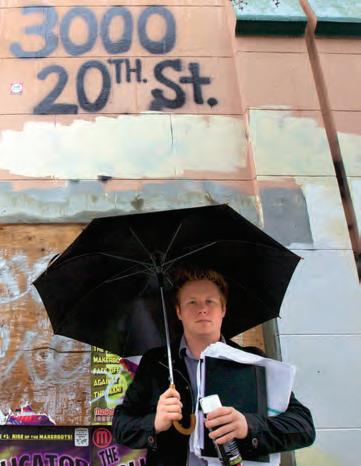
cheeses, homemade Flour + Water pasta, pasta sauces, wine and beer. “It will be as if you were walking into our larder: olive oils, vinegars, condiments, etc.,” said Subauste. Salumeria is currently slated to be open daily from 10 a.m. to 8 p.m., but that may shift depending on the neighborhood’s needs.
Also on the courtyard but without access to it will be Trick Dog, a bar that’ll serve food. It’s the creation of Scott Baird and Josh Harris, two bartenders collectively known as the Bon Vivants, also the name of their beverage consulting company, which does everything from guerilla marketing for the big brands to designing cocktail menus for local watering holes.
This will be Baird’s second bar; he also revamped 15 Romolo in North Beach. It’ll be Harris’ first. The third partner, Jason Henton, will serve as the operations and general manager. He’s the one who “keeps me in line,” said Baird, who added that when the Ne Timeas Restaurant Group first signed the lease for 3000 20th Street they wanted a bar from people who knew bars. They sent out a request for proposals, and Trick Dog won the competition.
When Trick Dog opens “before Halloween” and “before the weather gets cold in 2012” was as precise as Baird was willing to get it’ll be a place to get both high-quality food and fancy cocktails in a fun and accessible atmosphere. Baird’s philosophy for Trick Dog is similar to his co-tenants’: good product, no pretense. One of his favorite expressions is “delicious, not precious.” He described the food as a “gonzo menu,” meaning free, open, unedited and playful. The goal is to serve food from 5 p.m. until 1:30 a.m., to give people in the restaurant
industry an alternative to pizza or a burrito when they get off work. While Baird will influence the menu, Chester Watson will be the chef. He’s worked for Joël Robuchon and Thomas Keller, and most recently was executive sous-chef at Quince.
Baird wants Trick Dog to be the kind of place where regulars will cry over their woes and celebrate their victories. “We want it to be a neighborhood place, what bars used to be.”
“More Cheers, less Alinea,” he added, the latter a reference to Grant Achatz’
than food. He acknowledged, however, that it might not end up exactly how he’s envisioning it. “I’m afraid it is going to be busier than that; it will probably be slammed.”
The owners of Humphry Slocombe, Jake Godby and Sean Vahey, are much more tight-lipped about their new project, Parlour, which will open in the space between Southern Exposure and Trick Dog. Even the employees at their wildly popular ice cream shop on 24th and Harrison say they’re being kept in the dark. Parlour is slated to be a bakery and café that serves beer, wine and coffee. Plans call for it to be open from 7 a.m. to 11 p.m.
Godby, who is the creative genius
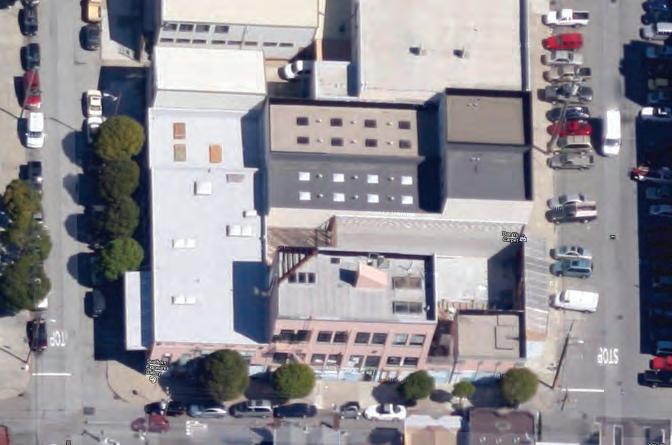
A MONTHLY UPDATE SPONSORED BY BRIDGE HOUSING
VOLUME 20 • MAY 2012
In last month’s column, Rebuild Potrero addressed some of the questions raised during a February 27th public hearing at the Board of Supervisors Land Use Committee. Below are responses to additional questions.
What is the project doing to ensure that the new development is sensitive to the neighborhood and the adjacent homes?
A primary goal of the master plan is to relate in a thoughtful way to adjacent homes and other uses. The taller, higher density buildings will be tucked into the steepest portion of the site which will keep their rooflines at the same level as lower buildings, while buildings with stairs and stoops are proposed adjacent to existing homes. To respect the neighborhood context, the proposed buildings adjacent to existing housing are no taller than 40’. The buildings proposed across from the single-family homes on Wisconsin Street step down the hill in a similar manner and are three stories and 30’-35’ in height. Even though each of the proposed buildings contains 13 units, the exterior is designed in 25’ modules to look more like single-family homes.
What is the proposed phasing of construction of the project?
Numerous phasing options have been evaluated but can be broken down into two general options: building from south to north
or north to south. The actual phasing will not be determined until a viable financing plan is established. At this time, we are anticipating three phases of construction.
What are the next steps in the environmental and entitlement process? How will the community be engaged?
There are many opportunities throughout the entitlement process for community members to express their views. There will be a public meeting this spring to solicit community input on the environmental issues that should be studied in the federally required Environmental Impact Statement. This study will be prepared simultaneously with the Environmental Impact Report and the joint study will be published before the end of 2012. After publication, there will be a 45-60 day period for people to submit written comments followed by a public hearing at the Planning Commission. All required land use approvals will be the subject of public hearings at both the Planning Commission and Board of Supervisors.
For more information, call 415-806-1429
or email potrero@bridgehousing.com
See more at www.rebuildpotrero.com

chocolate tarragon and strawberry candied jalapeño, trained and worked as a pastry chef for 15 years. When the Chronicle’s Inside Scoop first announced Parlour, it said that Godby would be “doing modern interpretations of American classics think: the Duck Fat Pecan Pie.” If Godby’s pop-up at Truck Stop last month is any indication of what might be on the menu, Inside Scoop is probably not far off. With offerings like duck fat chex mix, grilled cheese with brisket and tomato jam, and bourbon and coke float with chocolate chip cookies, his reinterpretation of the classics is decidedly his own. And with Boccalone lard shortbread cookies as one of Humphry Slocombe’s celebrated recipes, we know another place those pigs may be going. them on the couch to see how they feel and wear.
When asked how she came upon the name “Luna,” Hernandez tells the story of being on a night flight from Boston to San Francisco and looking out the window at a large and impressive moon. She then realized that she was reading the book Eva Luna by Chilean novelist Isabel Allende; the combination was too much to ignore. By the time they landed, her husband to be, also a designer, had sketched out the logo and look, in use to this day.
A restaurant with a view of the bay’s oldest boatyard and North America’s largest drydock will reopen by the end of this year. Most recently known as Kelly’s Mission Rock, 817 Terry Francois Boulevard has been renamed “Mission Rock Resort: Oysters. Bar. Grill,” by its new owner, Peter Osborne. Osborne sees great opportunity in the area surrounding the restaurant, which is a stone’s throw from the corner of Illinois and Mariposa streets and within walking distance of Mission Bay. “This area is so dynamic,” Osborne said.
According to Osborne, there’s been some recent set-backs to the area’s steady growth, with Salesforce halting its Mission Bay development plans, and the Golden State Warriors spurning the San Francisco Giant’s proposed basketball stadium in the newly-named Mission Rock neighborhood near AT&T Park in favor of a potential waterfront location at Piers 30 and 32. “But those were just enhancements, he said.” Mission Rock Resort may compete with The Ramp, which is located down the block, for customers looking for a bayside dining experience.
Osborne has a 15-year
lease with an option for five more years from the Port of San Francisco. Last month the port approved Osborne’s restaurant renovation plans, subject to a final vote by the San Francisco Board of Supervisors. Osborne expects to spend more than $2 million on cosmetic improvements. Structurally, the space will remain the same except for the relocation of some walls. The two-level facility will feature deck dining on both levels. The upper deck seats roughly 100 people. Osborne is planning to modify the restaurant to enable customers to dock a boat on the bay side, eat, and return to their boat for continued fun on the water, but “that’s phase two.” When the restaurant is fully operational the venture may generate in excess of $3.5 million in annual revenues, Osborne said.
Osborne’s business is familyowned and operated by his wife and older son. His younger son recently graduated from college. The Osborne family also owns MoMo’s, Pete’s Tavern, and Pedro’s Cantina, which are located across from AT&T Park, and may open more restaurants in the future.
Mission Rock Resort will feature bar and grill-style eating, including an oyster bar and a seafood-centric menu. According
to Osborne, the restaurant will offer a “quality dining experience,” but without high-end prices, with average checks competitive with similar Bay Area eateries. Mission Rock Resort will serve breakfast, lunch and dinner. Breakfast will include to-go items, such as coffee, croissants, and sandwiches catering to morning traffic along Terry Francois Street. The facility will be able to host parties, including wedding receptions. The restaurant will employ roughly 50 people.
The building has been empty since the beginning of this year, but the previous restaurant had been on hard times since its former managing partner, James Kelly, passed away in April of 2010, when it fell into bankruptcy. “We’ll be getting rid of the ghosts in this building and starting fresh,” Osborne said. Mission Rock hosted primarily promoterdriven parties, Osborne said, but that will not be part of the new place. “This is the exciting part of San Francisco right now,” Osborne said. “It’s fun to create things from the ground up.”
Osborne had his first restaurant job when he was in high school, and went into business for himself in 1991. “It just stuck,” Osborne said. He opened MoMo’s in 1998. “We’re going to do our [very best] to make this a destination,” the restaurateur said.

What does Oscar Wilde have in common with a teapot? Beauty. See for yourself in The Cult of Beauty, an exhibit of works from the Victorian avant-garde, now at the Legion of Honor. And if you think Victorian art must mean prim and proper, unobjectionable and uninteresting, you’d be wrong.
Beauty in this show wears many different looks. There’s a languid pre-Raphaelite beauty. The colors are deep and vivid; the settings, medieval-esque; and the women’s faces they are almost always about women, these pictures filled with the sensual, not the spiritual. See, for instance, Edward Burne-Jones’ Laus Veneris, and the dreamer in Rosetti’s The Daydream.
Although the famous portrait of his mother isn’t at the Legion, you can find Whistler’s austere modern beauty in his portrait of the philosopher Thomas Carlyle. Carlyle is simple, greys and blacks, set in his own time, his face weary. Whistlers are everywhere in the exhibit and, big or small, they’re almost always the “walk across the room” paintings.
And there’s the beauty with
which these artists infused the everyday in chairs and sideboards, kitchenware and wallpaper. These run from the lush and adorned the silver teapot worked with leaves and shoots, crowned with a little leprechaunlike figure to the clean and geometrical; the silver teapot, all angles, that would be at home in the San Francisco Museum of Modern Art.
When you’ve finished the main show downstairs, don’t miss dessert, located in two small rooms on the main floor. Find the photograph of Jane Morris. She was the model for that Rosetti painting, the epitome of the pre-Raphaelite woman, and perhaps, an instance of art imitating life. Because, as you’ll see, Jane Morris really was all that.
Last of all, check-out the postcard display, teasing the devotees of the cult of beauty perhaps the hipsters of the Victorian era in “Wishing You an Utterly Charming Time.” Which, hipster or not, you’ll have at this exhibit.
At San Francisco’s Legion of Honor through June 17, 9:30 a.m. to 5:15p.m., Tuesday through Sunday, www.legionofhonor. com.
SHORT CUTS from page 3
the commission. The Department of Building Inspection may have more than $11 million in uncollected and unbilled receivables related to notices of violations (NOVs). In the 94107 zip code alone, there are 232 open NOV’s, with some dating to 2000. Perhaps the new commissioners will clean things up.
Earlier this year San Francisco hosted the 10th anniversary of the Clean Tech Forum at the Hyatt Regency. On hand were representatives from venture capital firms, investors, innovators, and local politicians, including Ed Lee. Formerly Dogpatchbased Mission Motors earned a spot in the top 100 clean-tech companies for the second year in a row. This year’s theme included acknowledgement that roughly four years ago clean tech transformed into a “big boys club,” with Fortune 500 companies getting into the game with the goal of earning a “heck of a lot of money” while doing good for the world. “Sustainable development technology” became “clean tech,” and industry associations began retooling to help large companies find small companies to acquire. Despite the aura of exclusivity that’s come to be associated with clean tech, the sector’s products and services are changing the world in dramatic ways, and for the better. You’ll know the extent of its success if and when a Picycle or an Eddy Wind Turbine makes it to a location near you.
Some readers have expressed mystification as to why the View’s new section, “Southside,” has that name. The stretch of neighborhoods extending from Mission Bay to Bayview has more typically been known as the “Southeast Sector.” Truthfully, the View likes the sound of “Southside” better, which, from the paper’s perspective, captures both a specific geography and a cultural orientation. According to a recent New York Times article, a similarly named area of Indianapolis was “peacefully integrated…Its decades of harmony were a rebuke to the Southern-style racial divisions that characterized Indiana for much of the 20th century…” Upward mobility, an interstate freeway, and the construction of a stadium hollowed out that neighborhood starting in the late-1960s. While our Southside is certainly not hollow, it does feature a gentle mixing of cultures and races, which have been buffeted over the years by the same factors impacting Indianapolis’ eponymously-named neighborhood.
The View is looking for a few energetic individuals to help sell memberships subscriptions with premiums door-to-door or at community events. Payments are based on performance, with excellent marketers able to make more than $20 an hour. Contact: Steven Moss, editor@potreroview.net or 626.8723.
JUST

Top Floor Loft with Spectacular Views
370 De Haro Street #B19
Low inventory, low interest rates and lots of demand for proximity to the tech industry hot spots all add up to a new seller’s market. Buyers love Potrero Hill! The North Slope of Potrero Hill near Mission Bay and the trendy Dogpatch, this area is fast becoming one of the city’s most in-demand neighborhoods.
As a resident of Potrero Hill for nearly two decades, I have seen many changes in the neighborhood, and think it’s better than ever. Whether you are buying or selling, or just curious about our current market, Drop by my office at the corner of Connecticut and 20th Street or just give me a call.
Listed at $647,000
Potrero Hill is a great place to call home. I know because over the past decade, I’ve helped dozens of clients find their perfect spot on the Hill. I found mine and have lived here for 18 years. When you’re considering your next move, let me earn your business.

Question. Which Potrero street still dons cobblestones? Answer. See page 30.

S
1490

PARISH OFFICE
390 Missouri St
San Francisco, CA 94107
Phone: 415.285.5272
E-mail: info@stteresasf.org
SUNDAY MASSES
Saturday Vigil 4:15 pm
Sunday 8:30 am 10:00 am
WEEKDAY MASSES
Tuesday 8:30 am
Friday 8:30 am
PLEASEVISIT OUR WEBSITE: StTeresaSF.org

After operating for ten years on Potrero Hill’s North Slope, In-Symmetry day spa was forced to relocate in 2010. Over the ensuing two years In-Symmetry owner Candace Combs struggled to keep her small business afloat. But the story has a happy ending. In-Symmetry overcame numerous bureaucratic obstacles to re-open recently in a new location situated between Potrero Hill and the Mission. The View caught up with Combs to talk about In-Symmetry, the challenges small enterprises face in San Francisco, and Coombs’ new location.
GR: Tell us why you had to move, and the obstacles you faced before finding your new space.
CC: We had to move because of a zoning issue on 26th Street which, in the end, turned out to be misinformation from the City. Looking back now, I can say that all of our problems stemmed from a series of bad information I received from the City. On the other hand, I have to give a tremendous amount of credit to Regina Dick-Endrizi, executive director for the Office of Small Business. Without her, we still wouldn’t have a new space.
GR: How are you feeling now that InSymmetry is back up and running?
CC: Relaxed, for the first time in a year and a half! I feel elated and ready for the positive things that are coming next in our adventure.
GR: How would you characterize your new location’s primary benefits?
CC: We now have a storefront, which we didn’t have for the past ten years, and we’re 100 percent handicapped-accessible. We also have an additional massage/yoga room, so that makes five rooms total.
GR: How did you come up with the name “In-Symmetry?”
CC: My former business partner and I were throwing around a bunch of names, and we kept coming back to the concept of “symmetry”. We loved the idea of balance, especially after spending years in the tech industry, working behind a desk and admittedly not living a very balanced life. We want
to provide a place where people can find more balance.
GR: How would you describe the main benefit your clients receive from coming to In-Symmetry?
CC: Again, I go back to the idea of balance; that’s what we’re trying to provide. We have some of the best bodyworkers in the City. They really understand the body and have an arsenal of therapeutic techniques to help alleviate and even eliminate pain. We’re all about figuring out how to get you the help you need, whether matching you to your ideal massage therapist, getting you into a private yoga session to learn more targeted stretching and breathing, or referring you to someone in our great network of acupuncturists, chiropractors, psychotherapists, and physical therapists.
GR: I’m curious …how does someone learn to be a hot rock massage therapist?
CC: Really, what we focus on is deep tissue. The hot rocks help us warm up the muscles so that we can get in deeper, and enhance the overall experience. I handpick massage therapists who do great sports massage and deep tissue work, and I often personally train them to use the hot rocks.
GR: I know you’ve been through some tough times to re-open In-Symmetry. What’s the single biggest thing you’ve learned from the experience?
CC: Patience. And persistence! They go hand in hand. Don’t ever take “no” for an answer, but be ready to work through the process no matter what it takes.
GR: How have clients responded to your new space?
CC: I’ve been blown away by the response. So many people waited for us to re-open, and I’m really touched by that loyalty. Everyone seems impressed and happy with the new spa, and I think everyone feels like we grew into a bigger, better space.
For more about In-Symmetry, www.insymmetry.com or www.facebook.com/insymmetrysf. Greg Roensch is a freelance writer and Potrero Hill resident.
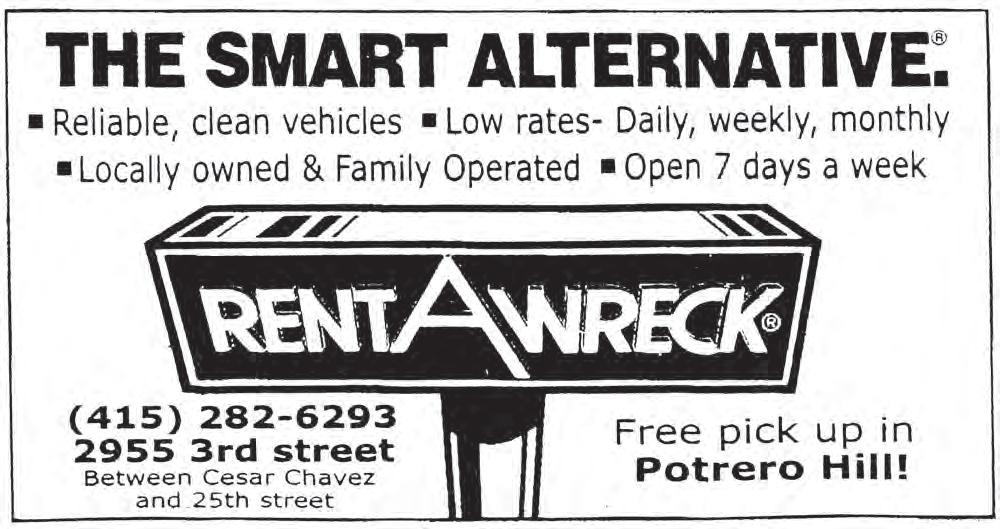
POTRERO BRANCH 1616 20th STREET 355.2822
Tuesday 10 am - 8 pm, Wednesday 12 noon - 8 pm
Thursday 10 am - 6 pm, Friday 1 pm - 6 pm
Saturday and Sunday 1 pm - 6 pm
Monday CLOSED
By Lynne Barnes, Potrero Branch LibrarianPotrero Hill Artists’ 54th Annual Exhibition. Opening Reception — Saturday, May 5, 2012, 6 - 9 p.m. With live musical entertainment and refreshments. Exhibit runs to June 1.
On Location: the Golden Gate Bridge on the Silver Screen. In honor of its 75th anniversary, Jim Van Buskirk, author of Celluloid San Francisco, (and former SFPL librarian) offers a clip-filled program of hilariously horrifying depictions of San Francisco’s beloved bridge. Saturday, May 26, 3-4:30 p.m., Program Room.
New ! Creative Writing Workshop! Join writer, filmmaker, journalist Shevi Rosenfeld Loewinger for a free class to help you write your own stories, develop characters, and find your unique voice in a supportive and creative environment. Two separate workshops: Tuesdays, 5:30-7:30 p.m.; Thursdays, 12:30-2:30 p.m. Contact Shevi for more information: sheviros@gmail.com or 602.7961.
eBooks and eAudiobooks Help Sessions. Bring your Kindle, Nook, iPad or other eReader device and we’ll show you how to download eBooks for free from the Library’s collection of more than 40,000 books. Wednesdays, May 2, 16, 23, 30. Upstairs Reference Desk, 6:30 p.m.
The Potrero Hill Book Club meets at the library every third Wednesday evening. May’s selection is A Moveable Feast by Ernest Hemingway. Join the discussion on Wednesday, May 16, 7- 8:30 p.m.
San Francisco Seed Library at the Potrero Branch Library. In partnership with the San Francisco Seed Library, the Potrero Branch Library has seeds available for “checkout.” Located on the 1st floor beneath the staircase.
Summer Reading Begins June 1st! Read and earn prizes! We’ll have weekly programs with animals, honeybees, crafts, music, jugglers, clowns, puppets, and a cartoon artist!
Baby Rhyme and Play Time. For infants up to eighteen months old and their caregiver. Tuesdays, May 1, 8 ,15, 22, 29, 1:15-1:45 p.m.
Family Storytime. Storytime features stories, songs, and rhymes. For children up to five years and their caregiver. Thursdays, May 3, 10, 17, 24, 31, 10:30-11 a.m. and 11:15-11:45 a.m.
Fun Flicks. This film program is offered every second Wednesday of the month and includes short films based on children’s books and stories. May’s films will be The Librarian from the Black Lagoon, No Roses for Harry, Mike Mulligan and His Steam Shovel, Mabela the Clever, and Max’s Words. For children ages three to eight. Wednesday, May 9, 6:30-7:15 p.m.
Korean Storytime. For families interested in learning Korean songs and reading Korean books together. Offered by community members, in partnership with the library. For children up to five years. Sunday, May 13, 4-4:30 p.m.
Swing Into Stories. The Early Literacy Mobile, in partnership with the San Francisco Recreation and Parks Department, brings reading and stories to young children. Potrero Hill Recreation Center Park, 801 Arkansas Street (at Madera), every fourth Tuesday from 9:30 a.m.- noon (May 22nd).
Sometimes it takes a stranger to teach you about your own neighborhood. Starting this month, Dr. Paul Cooney, a Palo Alto native, will be giving free walking tours of Potrero Hill on select Tuesdays. The two-hour tour covers about 1.5 miles.
Cooney is one of 350 volunteer “City Guides,” an organization sponsored by the San Francisco Public Library (SFPL), San Francisco Parks Alliance, and walker donations. Although City Guides is more than 30 years old, and offers in excess of 80 free neighborhood walks including a Sunday Dogpatch tour until now Potrero Hill didn’t host a City Guides walk.
Initially attracted by Potrero Hill’s gorgeous views, Cooney fashioned his walk based on research he conducted at SFPL’s History Center and through good old-fashioned theft. “Most of the tour I stole from Adah Bakalinsky,” Cooney joked. Bakalinsky is the author of Stairway Walks of San Francisco. “I varied the route to avoid going uphill. Going uphill wasn’t going to attract people.”
Cooney’s tour begins at the Potrero Hill Neighborhood House at the top of De Haro Street, and continues downhill with the exception of one upward block at 20th and De Haro streets. The tour has 13 stops, including the Carolina Street Earthquake Cottages and sites where Bullitt and Sweet November were filmed. The tour ends with an interior exploration of St. Gregory’s Church.
“The artwork there is incredible. It has 89 dancing secular saints,” Cooney said. “It’s unusual to have so many secular saints depicted.”
During the tour Cooney dis -

cusses neighborhood heroes and anti-heroes, including the Grateful Dead, poet Lawrence Ferlinghetti, reporter Carl Nolte, California State Librarian Kevin Starr, OJ Simpson, and poet Kenneth Rexroth. And he shares 19th century history, including anecdotes about Francisco De Haro, whose adobe house rested at the intersection of 20th and De Haro streets when San Francisco was a small township called Yerba Buena De Haro was Yerba Buena’s first alcalde, or mayor, responsible for hiring surveyor Jasper O’Farrell to conduct the City’s first plan.
According to Cooney, even those born and raised on the Hill will get something out of his tour. “I think people should want to know more about the place you live; its history, its characters.” he said.
In addition to the Hill walk, Cooney conducts tours of Nob Hill, Golden Gate Park East, and Alamo Square. For information: www. sfcityguides.org.











school enrollment lines, which cut the Hill in half along 22nd Street. “That’s blatant segregation on the Hill,” said Hatter. “How come all of Potrero Hill can’t be designated to Enola Maxwell?” he asked. “The push is for community schools, not school choice,” said Hatter. “School choice is what got the district into this situation in the first place.” In the Citywide lottery, most families choose better quality schools in San Francisco’s western sector. This, in turn, increases funding for those schools and further boosts their first-choice requests. Meanwhile, lower demand at already underenrolled, underachieving schools in Southside San Francisco causes these schools to lose even more funding, making them even less desirable. Although the lottery allows elementary school students to be assigned to their highest ranked middle school request, even if it lies outside their attendance area, if there are more students applying than openings, assignments are made by tiebreakers, which favor students within the requested school’s attendance area.
Webster’s expansion proposal also brings to light the historically poor communication between the district and the community. According to Hatter, SFUSD typically schedules public meetings at inconvenient hours so that few people can

attend them. Although the school board is supposed to keep minutes of even closed-door meetings, such records are difficult to obtain, he added. Moreover, oftentimes district representatives arrive at meetings with a pre-set plan that they simply communicate with community members without gathering their input. He recalled a “backdoor” deal in which SFUSD initially slated Webster to be designated to be shuttered but instead closed Potrero Middle School at Enola Maxwell campus and deemed that Webster would be rejuvenated.
“I would also say that there were
indicators of a lack of communication even within the district, not just between community and the district, which caused a lot of confusion,” said former ISA principal Matthew Livingston. “And that confusion got everyone emotional.” Livingston attended the informational meeting SFUSD held with Webster and Bryant parents about the feeder pattern with ISA, with the vast majority of the audience made up of Webster parents. He noted that the audience asked some critical questions of SFUSD representatives that indicated a disconnect, as well as a lack of communication and trust. He
perceived, as he put it, “definitely a strong aura of unhappiness and dissatisfaction” about the plan from Webster parents. Hatter can understand Webster parents’ frustration, as if they were “being thrown to the dogs.” However, he believed the planned expansion would do the same to ISA high school students.
Lunardi, who attended the April Board of Education meeting, is cautiously optimistic that the district will approve the expansion. She recounted that the board members at the meeting were nodding and smiling, indicating a positive perception of the proposal. “I feel positive about it, but knowing how the district works, I’m concerned it might take a little longer.” She noted that Buena Vista/Horace Mann, which integrated a Spanish immersion elementary school with a struggling middle school, took nearly 15 years to become a K-8 school.
Bartlett is similarly optimistic about the district’s decision on the proposal. “I don’t know how many times I have to talk to [the district] about it, but I’m going to be persistent,” she said. “I feel like there’s enough merit, other than it entails some work for them, but if they have to do consolidations and configurations anyway, why not build something forward looking?” Adams remained skeptical. “I think it’s going to be a lot of work even for it to be a possibility,” she said. “I think we’re going to be put through a lot of trials and tribulations.”





more characters per year, she said, far surpassing the English alphabet’s 26 letters.
At a Parent-Teacher Association (PTA) meeting at the beginning of the year, Principal Greg John notified parents that the school was no longer eligible to receive Title 1 Funding, federal money for low-income students. The school lost its special funding status because less than 50 percent of its students now require free lunch. At the meeting, participants were briefed on staff positions that would likely be cut, and ones that would be temporarily spared. The district will maintain an instructional reform facilitator defined as a literacy and school improvement coach elementary advisor, nurse and social worker, and a parent liaison, despite the school’s new standing as an improved school.
Some Starr King parents are worried about the funding loss, and believe
that Starr King is entitled to more support, especially for non-Mandarin students. Tan acknowledged that the school will have to adjust to what she called an “extra strain” on its community. Gone are the days when 90 percent of the student body qualified for reduced lunches, which in turn brought in funding for smaller classes, more teachers and other extras that will now fall onto the PTA to finance.
The school also faces other potential funding cuts from the state and district, which may be triggered when the state’s budget is released in July. A longtime Starr King volunteer, who declined to give her name, said parents are fighting for programs, services and funding that are likely beyond the school’s budget. According to the volunteer, it’ll be up to the PTA to bridge the gap. Other successful elementary schools, such as Clarendon and Rooftop, depend on donations from parents to maintain educational quality.
Tan called Starr King’s PTA “maturing,” and is working on increasing its fundraising. Weise saw a silver lining in the Title 1 cuts; she’s hopeful that students from “highlyresourced” homes, who tend to be part of the Mandarin program, will be able to balance the slashed school budget. Despite her optimism, other schools that have lost Title 1 funding warned that the two years after cuts are tough, creating “a donut hole period” in which fundraising is critical. With federal funding limited, the school’s needs soon will fall on parents’ shoulders.
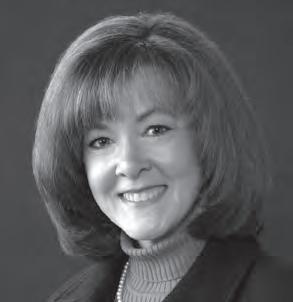







P
u SS i owa below
The USS i owa was refitted at the Hunters Point Shipyard’s Dry Dock Number Four in 1945. From Lost San Francisco , published by Pavilion earlier this year. P


Daniel Webster, Live Oak and Starr King Elementary Schools walked together to promote and celebrate peace. Conceived four years ago by Webster’s Terra Gauthier to teach students to have a voice in their community and create a bridge between schools, this year’s walk included more than 500 students from kindergarten through eighth grade. The walk culminated at the Potrero Recreation Center, where children joined a peace rally lead by MC, Brotha Clint. At the rally students sang songs, watched performances, and exchanged “Peace Cards” with a student from a different school and grade. Zack Revell, from Potrero Hill Family Resource Center organized the event and designed the t-shirt given to every student. Sam Henrick, student dean at Live Oak, created and lead the Peace Card exchange.







Join neighbors, your Mayor, Supervisor (expected at noon), State and City officials as we celebrate the official opening of Progress Park and participate in the neighborhood’s 2nd Annual Sidewalk Sale
SAtuRdAy, MAy 12th
10AM-3PM on IndIAnA St. (between 23rd & 26th)
GEt In On thE fun!
Be there to dedicate the brand new, volunteer-created green space helping to transform our neighborhood! And...
✶ Learn about the local history ✶ Enjoy the music ✶ Sell your good stuff *
✶ Buy better stuff ✶ Meet your neighbors ✶ Savor the food Bring your four-legged friends for doggy games in the fenced in off-leash dog run and more.
*10% of all sales will be contributed to Progress Park
For more information on selling your items, contact Karin Roper at info@patsgarage.com (415) 647-4500




The View asked Hill resident and career expert Mauri Schwartz to answer questions from job seekers. Submit your questions to editor@potreroview.net.

Q: I’ve been working for the same company doing the same job for a while, and want to make a change in what I do. I’ve tried to move into another type of job here but haven’t been successful. How do I go about achieving this transition in another company?
A: Keep in mind that employers will hire you to do for them what you’ve already performed well in your current or recent job. I’m sure you feel that you’re capable of handling a new role, but it isn’t realistic to expect a hiring manager to take the risk, especially with so many experienced candidates to choose from.
Look for an opportunity to perform your current job function in a new organization that has the potential for career growth. Choose a company which is in a thriving industry and is growing. You can identify these enterprises with a little research. An excellent source is the San Francisco Business Times’ Book of Lists , which is published each year and includes information such as the “100 Fastest-Growing Private Companies in the Bay Area,” “200 Largest Public Companies in the Greater Bay Area,” and “Best Places to Work.”
Check-out the careers section on company web sites to see if there’s an opening for you, but, more importantly, to see if there are a significant number of open positions, which is a sign that the firm is growing. There’s a considerable amount of organizational change in rapidly growing companies. If there isn’t a position for you now, there may be one soon, and you can pursue a networking strategy to become acquainted with people who currently work there.
Rapid growth and organizational change also indicate a greater potential for you to move within the organization. However, keep in mind that you must sell yourself based on your relevant achievements. You will not be hired if the manager knows that you’re looking over her shoulder to the next position. You’ll need to be prepared to settle in and prove yourself before you’ll be considered for a move to another role.
Mauri Schwartz is President /CEO of Career Insiders www.CareerInsiders.com.

LOCAL BUSINESS from page 5
and neighborhood,” said Landon. He conceded that living in the community in which an enterprise does business might influence a proprietor’s choices, especially if she knows more “insider” things than another merchant, perhaps ascertained from chatting with clients and customers during informal encounters in public spaces.
But there’s no set formula; it’s up to each businessperson to ingratiate themselves into their neighborhood.
“Where you go home at night is not quite as important,” he said. “You don’t lose points for not living in the neighborhood.”
Mary Petrin of Kate’s Closet on 18th Street isn’t looking for points, but the distance between her storefront and her front door is a few blocks.
Petrin, a native San Franciscan, moved from the Sunset District to Connecticut and 20th streets almost a decade ago. One year ago she opened her closet-sized consignment store, named for her three-and-a-halfyear-old daughter, and filled it with jewelry, scarves, sweaters, and other items. The shop keeps her involved in the community, although she doesn’t think there’d be a difference in her business relationships whether she lived four blocks or four miles away from her boutique.
Petrin did identify important neighborhood connections that she’s made by living locally. Many of her patrons are Hill residents, and she’s learned about the community from them, including about neighborhood schools to potentially enroll her kindergarten-bound daughter. She also noted that with a preschooler she can easily get home in an emergency, and can walk or bike to work. Petrin bumps into customers away from the store, and patronizes local businesses during her time off. With her shop in the heart of the Hill’s business district, she’s noticed that many of her neighboring businesses are run by other Hill residents, such as Blooms Saloon and Plow, though she said it’s hard to distinguish; most Hill businesses have a community feeling, regardless.
Kayren Hudiburgh, co-owner of The Good Life Grocery on 20th Street, said the line is blurred between neighbors, friends and customers.
Hudiburgh and her business and life partner Lester Zeidman live roughly three blocks from their jam-packed grocery store, which is partially owned by its employees. Hudiburgh considers the Hill a village, which has kept The Good Life going, even after the store moved from 18th to 20th Street in 1986. She lightheartedly admitted that living and working in the same several block area has its downsides, such as attending social functions outside of work and hearing that last week’s peaches just weren’t ripe enough. But overall she’s delighted with her situation. “You are really integrated into your community. It’s so special to stay active in the neighborhood,” Hudiburgh said.
BOOSTER from page 6
in a building that would house a variety of businesses, including restaurants, art studios and light industries, which would be constructed in conjunction with an existing California College of the Arts edifice. He called the project “a green connector to Mission Bay.” After the presentation Kelly noted that “historically [the Boosters] have supported integrated incubators.”
Archstone Apartment’s group vice president Amir Massih, along with several associates, introduced various mock-ups of housing units at 801 Brannan Street and 1 Henry Adams Street, which would bring in 2,000 new residents. Massih delved into building specifications, as did architect David Baker, who spoke about parking spaces, green “living alley” areas and the new apartment complexes’ overall sustainability.
A few weeks after the meeting, Kelly reflected on the history of development projects coming into the once under-developed Potrero hillside. He traced back to the “dotcom” boom of the early 2000s, when live-work zoning took over the Hill, and an influx of businesses set-up shop in Southside neighborhoods. According to Kelly, those trends pushed the San Francisco Planning Department to create the Eastern Neighborhoods Community Plan, which was finalized in 2009.
EXPERT GARDEN & LANDSCAPE SER-
The community feedback necessary to devise a viable plan increased the Boosters’ profile, because “the people who live here are the experts,” said Kelly.
The Boosters is wary of “upzoning,” in which an industrial area slowly is rezoned for social, commercial and eventually residential activities, as well as mixed-use zoning. Kelly emphasized the group’s focus on infrastructure and development plans that incorporate new parks, schools and transportation for the truckloads of new residents they’re attracting to the area. “The Boosters have to focus on how to support current residents and new neighbors,” Kelly said. For example, it is in Archstone Apartments’ “… best interest to have a functioning supportive neighborhood with the right infrastructure,” he said.
At last October’s Potrero Hill Festival Boosters staffed a booth at which they asked attendees what issues they considered most important to the neighborhood. Topping the list was transit, followed by parks and broadband issues, which encompassed underground electricity wiring. Kelly mentioned micro-trenching as an emerging communications technology that the group has researched under the guidance of vice president and longtime Boosters member Dick Millet.
Private shuttles are a growing point of contention on the Hill. According to Kelly, the Boosters are studying how people get to work, and intend to approach the companies about the possibility of creating an organized shuttle circuit, with the potential to be used by verified residents, who often watch half-empty shuttles drive by while waiting for Muni. Further details on proposed shuttle solutions are expected to be discussed at upcoming meetings.
Kelly mentioned the beginnings of a plan to create a park improvement district, noting that of the many Hill parks and green spaces few are maintained by the San Francisco Recreation and Parks Department, giving some flexibility on how the neighborhood can support them. Kelly is aware that the Boosters take on ambitious projects that the City has whole departments
devoted to, but “if we can’t do it, no one else will.” Small volunteer committees research Hill issues. “We totally put the ‘hoc’ in ‘ad hoc’,” Kelly quipped.
The Boosters have collaborated with other neighborhood groups, including as part of recent Board of Supervisors redistricting discussions, when it teamed-up with organizations from Bayview and other District 10 areas. The explosive subject of parking meters creeping onto the Hill’s residential blocks connected the Boosters to organizations in Dogpatch and a newly-formed northeast Mission District group. “The knowledge base in the neighborhood is so broad and deep,” Kelly said. “This is a chatty neighborhood. We are very engaged.”
According to Kelly, many Booster members are involved in other neighborhood and advocacy groups, which as president he encouraged. The Boosters membership overlaps with the Potrero Hill Parents Association, Starr King Open Space and Potrero Hill Democratic Club, which Kelly views as opportunities to reach more constituencies. Kelly encouraged more Hill residents to join the Boosters, “If you want to see things improve in your neighborhood, you’re not alone.”
Potrero Boosters Neighborhood Association meets the last Tuesday of each month at 7 p.m., with social time starting at 6:45 p.m. at the Potrero Hill Neighborhood House, 953 De Haro Street. For more information: www.potreroboosters.org; president@potreroboosters.org.

EAT ALONE!
Join us for daily lunch and add to your social life. Mon-Fri, hot nutritious meals— your first time with us you get a free lunch! Bingo, cards, birthday celebrations, special events, and other activities. For more information, call Dolores Maghari at 415.826.8080. PH Neighborhood House, 953 De Haro St.
WANT TO TAKE A CERAMICS CLASS IN SAN FRANCISCO? Come to sfclayworks! New sessions every 8 weeks. All levels welcome. sfclayworks.com (415)647-CLAY
POTRERO HILL HISTORY NIGHT 2011 is now available on DVD! You’ll hear Goat Hill Phil talk with Josephine Firpo Alioto about growing up on 20th St. 90 years ago. Hill resident Joel Selvin is also on the program, talking to Country Joe McDonald about the 1960s S.F. music scene. It was one of the best History Nights ever! Check out a copy at the 20th St. library or buy one, $10, 415-863-0784
VICES We do it all—garden maintenance, design, construction, irrigation systems, lighting, stonework, tree service & fine pruning. No job too big or too small. Free estimates, excellent references, insured, over 20 years experience. Call David at 415-846-7581.
Housekeeping
CLEANING PROFESSIONAL 26 years Experience. Apartments, homes, or offices. Roger Miller 415-794-4411 References.
Home Services
HANDYMAN
EXTRAORDINAIRE!
20 years experience Repair Remodeling Elec Plumbing Light Fix. DOORS! Windows Cabinets Decks Staircases Built. $40-50/hr mike@trivelocarpentry.com. Mike (415)308-2380
TOM’S PLUMBING Tom has been satisfying Potrero Hill customers for over 30 years. All plumbing needs handled promptly and efficiently at a very low cost. Keep it local and call Tom Keats: 415-824-3538.
CARPENTRY & PAINTING also: plumbing, seismic/structural work, stucco, roof repairs & guttercleaning, tree trimming. www.FarWestConstr.com Jim Kennedy, 415-276-1990 Ca. Lic. 751689
Rentals
SPACIOUS AND BEAUTIFUL Furnished guest garden apartment. Private. 1/2 blk. to restaurants. Non-smoking. 2 people. 415-861-3208.
CHARMING GARDEN APARTMENT One BR, 2-night minimum. Fireplace, patio, deck, French doors. 415.641.4488.
WINE COUNTRY RETREAT FOR POTRERO HILLIANS: 3bdrm,2bath,tranquil 30acr, woods, all yr, stream, trails;
sleeps 6(max),firewd incl, dogs&kids ok; 3ngts=$600;wk=$975; pics at spot02. googlepages.com;415-647-3052
FREE PORTRAITS BY PROFESSIONALLY TRAINED HOBBYIST I am a retired professional who now does portrait photography as my hobby/passion. I have a studio on Potrero Hill with top quality equipment where I do free portraits & prints for families or individuals. There is no catch, professional quality for free, and fun for all. Contact me at alcastino@mac.com and I will send a link to sample photos.
Twenty-four year old Potrero Hill resident Raina Dwivedi was on the Number 19 bus on her way home from shopping when she was unexpectedly challenged to a forceful arm wrestle by an adolescent man attempting to steal her cell phone.
Only a few stops away from her home, the bus became increasingly crowded. “I had a weird feeling about these two kids on the bus. I watched them start to exit the bus, and then both boys hesitated and sat back down. They continued to ride the bus for a few more stops,” Dwivedi said. She recalled that both males were roughly 18-years old with short brown hair. They were sitting a seat apart from one another near the center of the bus. Dwivedi was seated near the back exit.
Dwivedi didn’t notice the young men again until one of them, dressed in a red hooded sweatshirt, approached the exit and prepared to step down towards the doors as the bus was coming to a stop. As he stepped down, the bus doors started to open, and he suddenly lunged at Dwivedi’s cell phone. A tug of war ensued, as Dwivedi clung to her phone, and yelled at the male in
an attempt to draw attention to her struggle. “We arm wrestled for a good 10 seconds before he finally gave up and ran off of the bus.” Dwivedi was shaken-up by the encounter, but kept her phone. She said that was thankful for her phone’s rubber case, which allowed her to have a firm grip during the abrupt incident.
Although Dwivedi was able to leave the bus with her possessions in hand, other unsuspecting victims haven’t been so lucky. With smart phones costing up to $700, there have been multiple reports of this type of theft on buses. Even if a phone is under contract or has a busted screen, it still has value for its parts.
Dwivedi advised people sitting near an exit while riding MUNI to keep anything of value out of sight to avoid a similar situation. Hill resident Paul Schreiber suggested that smart phones owners enable the Find My iPhone, or equivalent, application to track the location of their device using its GPS. “The number of people who find out about this feature afterword is way too high,” said Schreiber. He also advised setting a passcode lock on phones to avoid unwanted access.
A View survey of San Francisco pawn shops revealed that some out-
AiRPORT
The Airport commission has commenced the rFp process for Terminal 3 common Use club Lease at San Francisco International Airport. The Informational conference, originally scheduled for 2:00p.m pST, April 24, 2012 at San Francisco International Airport, has been postponed until further notice.
if you have any questions, please contact Cheryl Nashir at 650-821-4500
NOTiCE OF FuNDS AVAiLABiLiTy RFQ - FiNANCiAL AND ExPANDED
AuDiT SERViCES
First 5 San Francisco announces the Availability of Funds for Financial and expanded Audit Services. Approximately $30,000 is available for the period of 08/01/2012 to 12/30/2013 and renewable up to two years. Funding supports financial audit review, financial reporting and expanded audit

lets only deal in Apple products; one didn’t accept phones. One shop offered $100 for an iPhone 3G, no questions asked. Only half of the shops wanted to know if there was a contract connected to the phone. Reassuringly, one pawn shop stated that they submit all phones they receive to their local police station to see if they match any stolen items reports.
In addition to pawn shops, there are other ways to trade phones for cash. On gazelle.com and cashforsmartphones.com electronics can be sold through delivery services. According to a Gazelle customer
service representative, Michael, “every phone has an electronic serial number (ESN) that our inspection team checks once it arrives. If the phone has an active account, or if the account that was closed has an outstanding bill or if it was ever reported as lost/stolen, the ESN would become active. If the ESN is still active you would need to have it cleared in order to receive the full offer. If you are unable to clear it, it would reduce the trade in value to the broken condition.” In other words, Gazelle will purchase phones with contracts, since they can be used for parts.
the deadline.
For more information, please visit: www. sfartscommission.org or contact Zoë Taleporos, at (415) 252-3215 or by email at zoe. taleporos@sfgov.org.
AiRPORT
The Airport commission has commenced the rFp process for the Airport Advertising Lease. The proposed minimum financial offer is $7,500,000 with a term of eight years.
The Informational conference will be at 10:00 a.m., May 10, 2012, at SFo business center, 2nd Floor, 575 n. McDonnell road, San Francisco International Airport.
Please see http://www.flysfo.com/web/page/ about/b2b/conces/ for additional information or call Gigi r ricasa, Senior principal property Manager, at (650) 821-4500.


Bayview Police Station Captain’s Community Meeting is held on the first Tuesday of each month at the Bayview Station, 201 Williams Avenue. Next meeting: May 1st, 6 p.m.
Dogpatch Neighborhood Association usually meets the second Tuesday of each odd-numbered month. Next meeting: May 8th. Voting membership is open to anyone living in or owning property or a business in Dogpatch. For more information or to join/pay online: mydogpatch.org
McKinley Square Community Group is a communication and discussion group regarding events and activities, clean up days, improvement and beautification, and other concerns, such as crime in the neighborhood. MSCA board meets approximately quarterly on the second Wednesday of the month. Look to the online discussion group for postings of upcoming meetings. http://groups. yahoo.com/group/McKinleySquareCommunity. Locations vary between the Potrero Hill Neighborhood House and Downtown High School. For updates, including sustainable gardening and park workdays, and our grant progress, check out the MSCA blog at: http://mckinleysquareblog.blogspot.com.
Potrero Boosters Neighborhood Association meets the last Tuesday of each month at 7 p.m. (social time begins at 6:45 p.m.) in the wheelchair-accessible Potrero Hill Neighborhood House, 953 De Haro Street. For more information: potreroboosters.org or email president@potreroboosters.org. Next meeting: May 29th, 7 p.m.
Potrero Dogpatch Merchant’s Association meets the second Tuesday of each month at 10 a.m. at Goat Hill Pizza, corner of Connecticut and 18th streets. Visit potrerohill.biz or call 341.8949. Next meeting: May 8th, 10 a.m.
Potrero Hill Democratic Club meets the first Tuesday of each month at 7 p.m. at the Potrero Hill Neighborhood House, 953 De Haro Street. For more information: 648.6740, PHDemClub.org. Next meeting: May 1st, 7 p.m.
Potrero Hill Garden Club usually meets the last Sunday of the month at 11 a.m. for a potluck lunch in a local home or garden. Discussions are held on organic, edible, or ornamental gardening appropriate for Potrero Hill’s microclimate. Call 648.1926 for details.
Starr King Open Space will be holding our annual board meeting and elections on May 21st at Starr King Elementary School in the cafeteria at 6 pm. Please enter via the Wisconsin gate. See you on May 19th for our monthly stewardship clean up day. To keep up to date on the latest news and events go to starrkingopenspace.org
answer. (from page 21) 24th Street, between De Haro and rhode island streets.




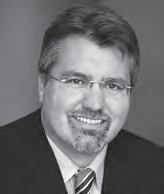
Estate planning for a loved one with special needs is essential. Improper (or no) planning can result in the loss of important public benefits and can expose the loved one with special needs to predators and scammers. Setting up a plan now will allow people to carefully construct a plan for the ongoing care, advocacy, and management of the loved one with special needs.
The primary planning tool for persons with disabilities is called a “Special Needs Trust.” Such trusts fulfill several functions. The first is to manage funds for someone who may not be able to do so himself or herself due to disability. The second is to
preserve the beneficiary’s eligibility for public benefits, whether that is Medi-Cal, SSI, or other programs. Another is to set up a system of advocacy, care, and housing to fully enhance the quality of life of a loved one with special needs.
Limited Conservatorship
Persons planning for loved ones with special needs who are age 18 or older should also determine whether a limited conservatorship would be necessary. If a conservator is appointed, that person will be able to make important decisions on behalf of the loved one with special needs.
Attorney Kevin Urbatsch is a national expert on the planning needs of persons with disabilities. He has dedicated his career to providing comprehensive, highly personalized estate planning plans for loved ones with special needs.
Kevin’s next free seminar: Wednesday, August 3 Berkeley, CA
For more information please contact Abbie Villanueva • (415) 896-1500
of the Hetch Hetchy Valley was devised primarily to fatten the wallets of a few developers. The dam was a mistake; for SFPUC to double down on that mistake is to dig us into an environmental hole that, over time, will become incrementally more difficult to dig our way out of. A healthy eco-system is the sum of many components in balance; when that balance is destroyed so is the system’s health.
Such was the case with the destruction of Hetch Hetchy Valley, a veritable jewel of the Sierras that delivered an abundance of life to our Bay that only a dam could close off.

But it need not be so. The damage can be reversed. With minimum expense, O’Shaughnessy Dam could gradually and safely be drained, eventually restoring Hetch Hetchy Valley to the mountain cathedral it once was, and was meant to remain for our children to behold and enjoy. There’s a movement throughout the country in which several dams have already been dismantled, with many more scheduled to be. More people are seeing the logic and benefits of restoring our rivers to their natural, free flowing, life-giving state. We could do the same for our magnificent Tuolumne River, allowing it to once again run rich and full with glistening Chinook salmon on their journey to the sea.
With climate change relentlessly bearing down upon us, it’s imperative that a major paradigm shift takes place. Environmental priorities must be re-assessed; massive changes considered. Hetch Hetchy Valley’s restoration would be a most excellent, symbolic and appropriate starting point.
K.R. Moore
Minna Street
Car Break-ins
Editor,
We wanted to let you know that spring seems to have brought a new rash of car thefts with it. Last night, our car and another car right next to it were broken into, the street nicely strewn with pieces of glass.
The thieves had time to go
through every compartment in the car and take everything, including a bag of Gummi bears and compact discs. What’s worse, they didn’t just smash the passenger window, but used a crowbar to also damage the door.
We’ve filed a police report and asked the police to increase patrols in the area, since another family on De Haro between 25th and 26th streets told us they’d had seven car break-ins between their three cars since the beginning of the year (see letter below).
Steffan and Andrea Heuer
De Haro Street
Editor,
I’m at my wit’s end. I’ve lived between 24th and 25th streets on De Haro Street for eight years. Every year a car window gets busted; it’s a fact of life. But things are way beyond that right now. Since January our car windows have been broken seven times. In March four cars were vandalized on our block, including two of our vehicles, A few weeks later the same car of ours got hit, along with two others on the block.
Walking on our sidewalk is like wading through a lake of glass. We leave the car doors unlocked, the glove box open and nothing in the car. The constant burglaries are expensive, and difficult to explain to our young girls.
In response to the attacks we’re handing out flyers in our neighborhood and pulled together a block meeting. We’re considering more lighting, and potentially cameras (ugh!). We’ve filed police reports, and have met with the Bayview Police
Department, which said they’d step up patrols. We’re writing to the View, our District Supervisor, Ed Lee and whoever else occurs to us might possibly care. We’re wondering if this City is worth it. We’re feeling sad about the tremendous poverty and anger just over the hill in the Annex.
Will things ever change here?
Jonathan
Rosen De Haro StreetLitter
Editor,
I live across from Starr King Elementary School, and for months now there’s been more and more “school remains” being thrown in my driveway and in my yard! In this day and age, when recycling is such a huge part of our culture, it’s disappointing to look out my window and watch students throwing homework, valentines, juice containers, food wrappers, and other types of trash into the streets and on our property! And, it isn’t always just the students! I’ve watched parents clearing out their cars and throwing debris into the streets while waiting for their children! Isn’t it about time something is done to stop this behavior?
Perhaps if the teachers, faculty, and parents are unwilling to teach these children to stop littering, then the people of our neighborhood can insist something be done to keep our streets and property clean! I’m extremely disappointed in the behaviors displayed by Starr King students and their parents!
Diane
Evans De Haro Street








